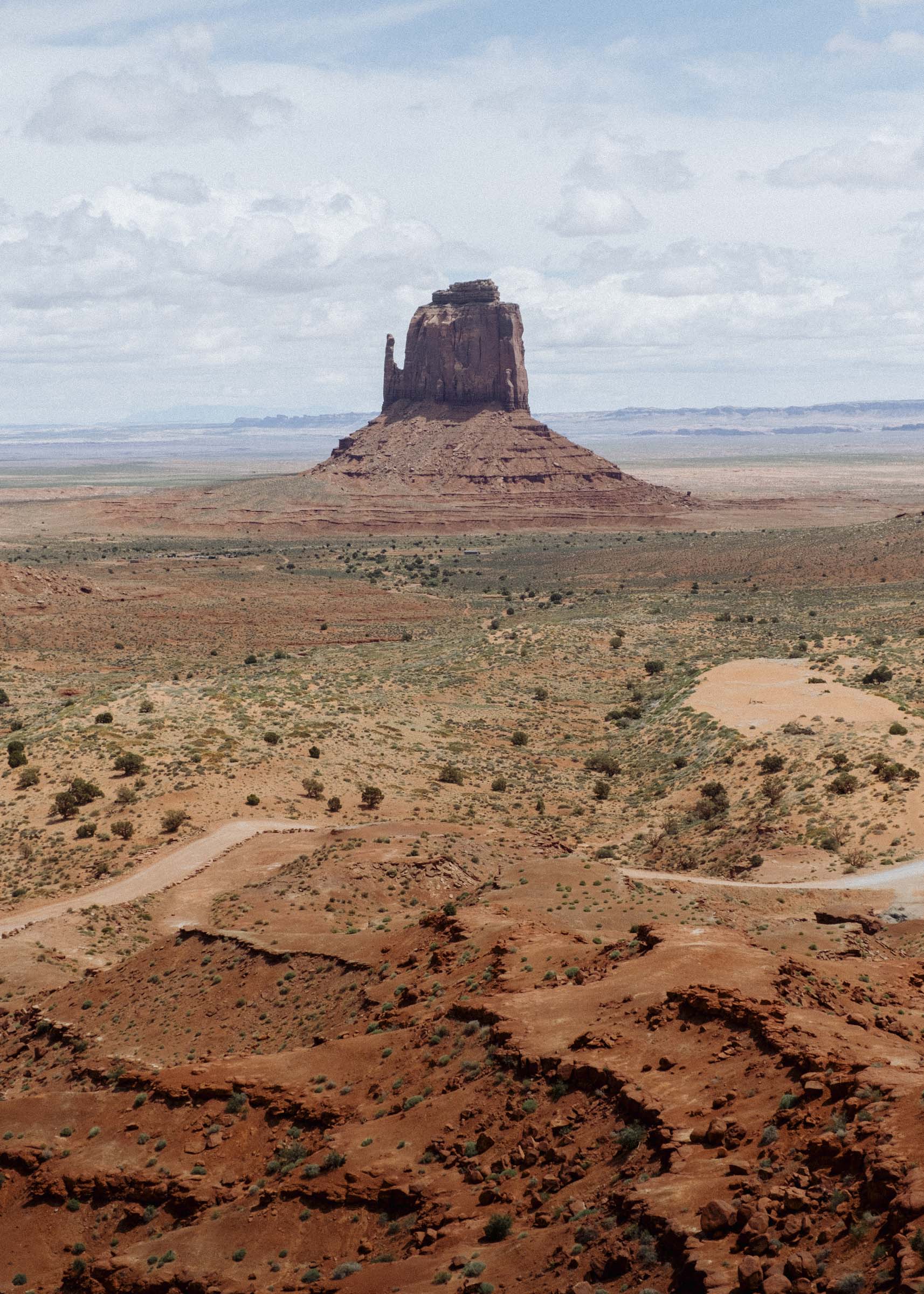Death Valley
First impressions from the blistering basin
Death Valley is the kind of place where superlatives pile up quickly: hottest, driest, lowest. But between these extremes lay some intriguing contradictions: it's the hottest place on earth, yet much of the park is covered in snow well into summer. With no rivers or lakes and scant rainfall it's the driest area on the continent, yet evidence of flooding is everywhere and the valley is somehow home to its own unique species of fish. It's the lowest point in North America, but Mt Whitney — the tallest peak in the contiguous USA — is only an hour away. It is a harsh and hostile environment — literally called Death Valley — but it is rich in biodiversity and a crucial habitat to a complex web of plants and animals that call it home, including the Shoshone people who have lived here for generations.
So yeah, Death Valley is the kind of place that piques your curiosity. Yes, it is barren and bleak and sun baked, but it's also one of the most raw and starkly scenic places I have ever visited. It is a marvel, a vast and unique wilderness where you can witness the powers of time and the environment firsthand. Just be sure to drink lots of water.
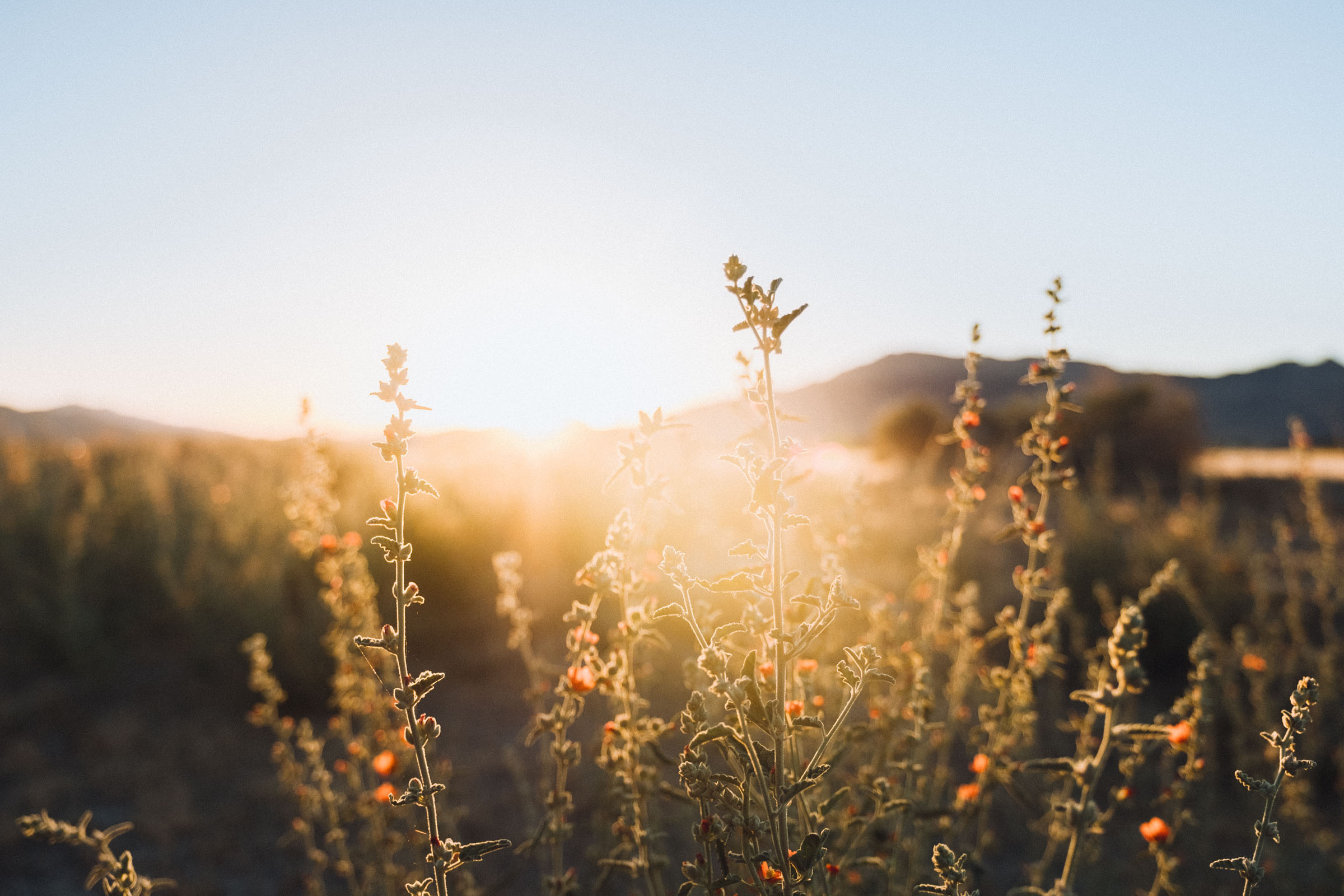
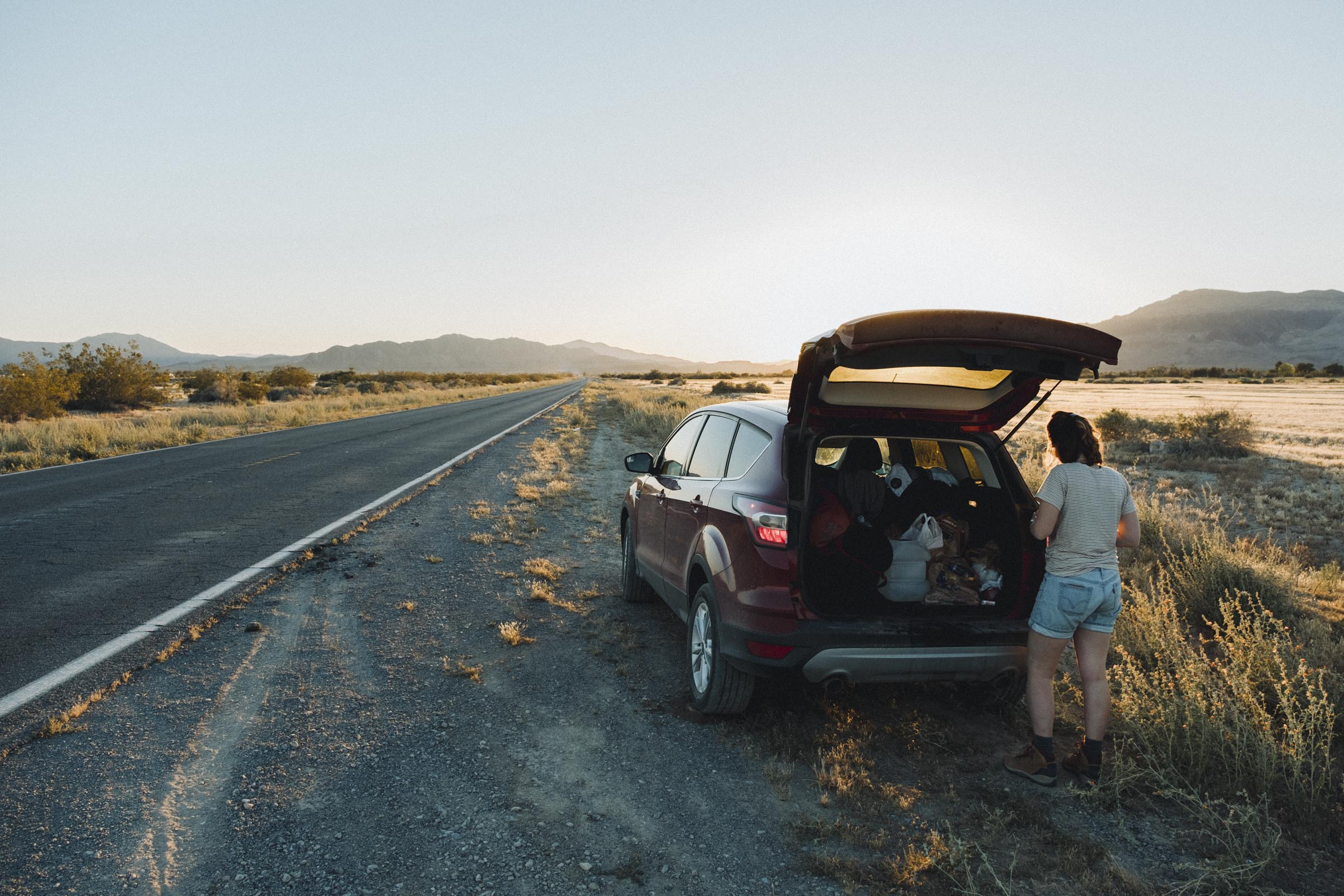
We escaped a typically wet spring in Vancouver to drive around the desert for a bit. We had just spent a couple days in the mountains east of Zion where nighttime temperatures dipped below freezing, our drinking water like cold crystalline stabs, our teeth chattering in the dry desert air. But as we drove west the heat began to build.
Arriving in Death Valley in the cloak of evening, we drove through dim black canyons that blotted out the stars. Pulling into the mostly empty campground at Furnace Creek, a wall of heat hit us when we opened the car doors. The hot oven wind moved over us like a blast from a dry sauna, pulling the tent from our hands as we set up camp. We laid out our sleeping bags under us, splaying bare limbs artfully so that no skin touched. It was nearing midnight and still 96°F (35°C).

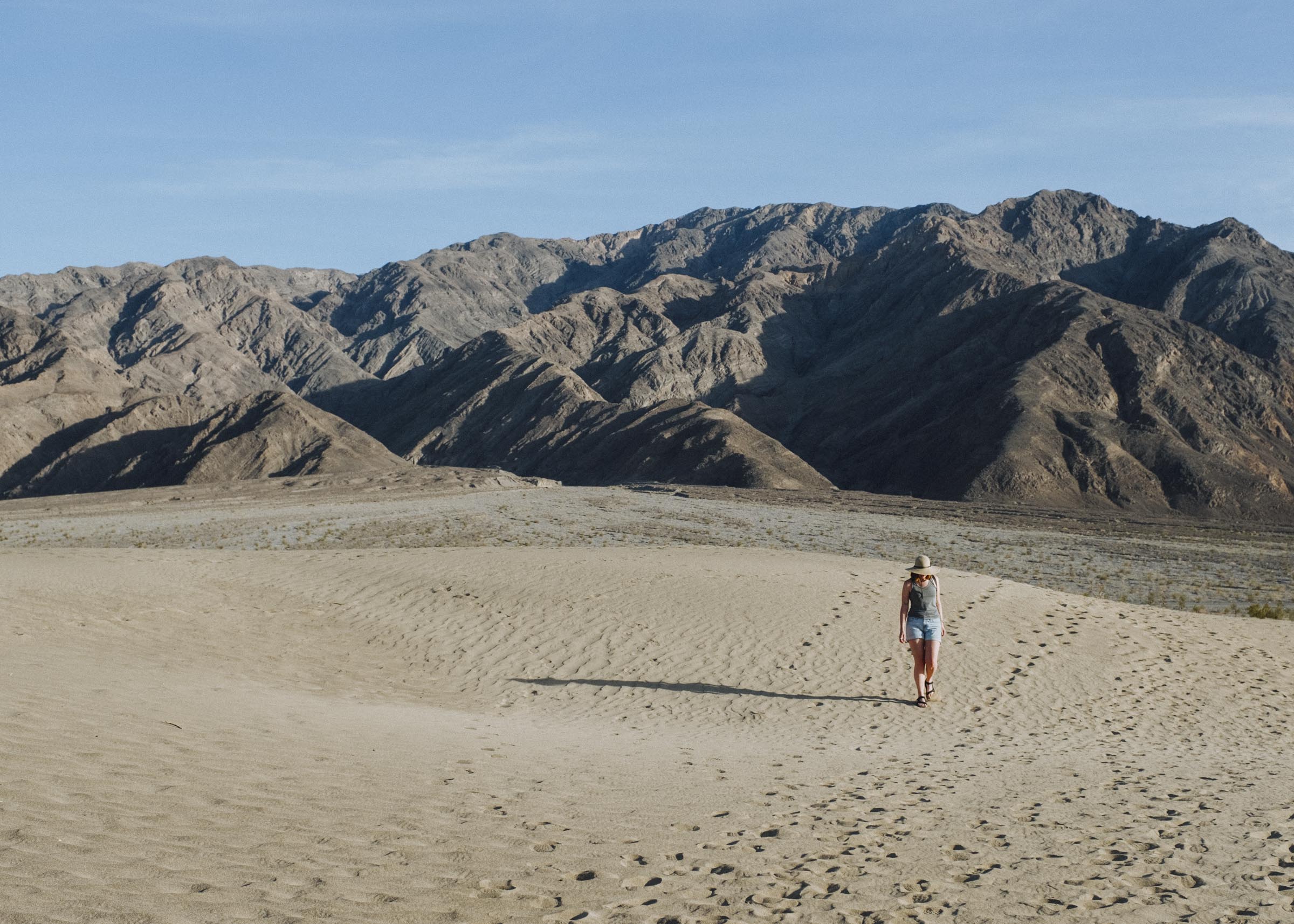
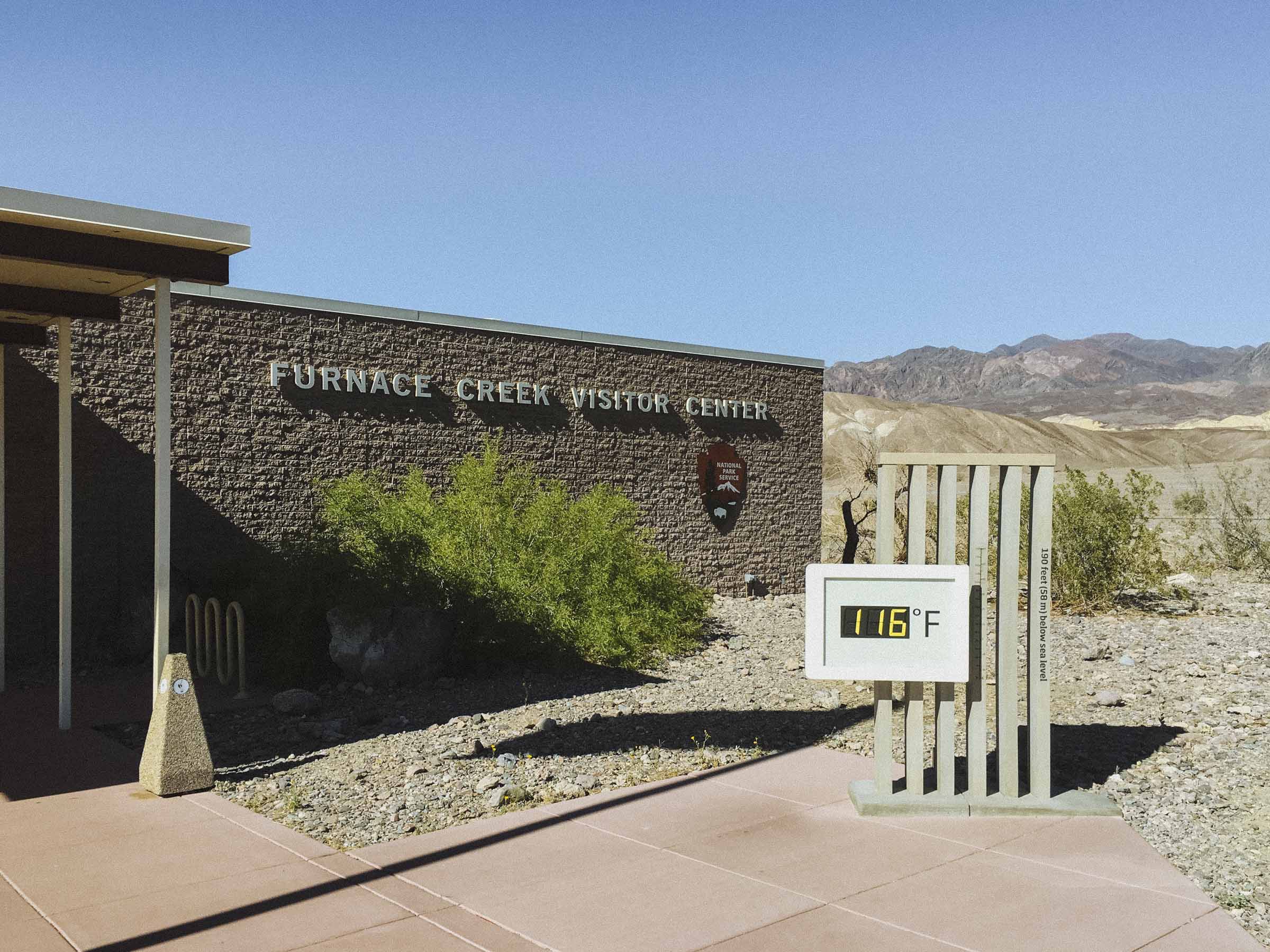
Zabriskie Point & Badwater
The first morning we woke before the sun, the predawn temperature a chilly 85°F (30°C). Quickly packing up camp, we retraced the road back to Zabriskie Point which we passed the night before, and joined a small crowd of tripod dads patiently waiting for the light to hit the colourful washes and eroded hills. It was a long wait but once the light crested over the mountains it really moved and within minutes the whole landscape was illuminated. We moved on to the Badwater Basin.
The lowest point in the park, Badwater Basin is a vast white salt pan some 282ft (86m) below sea level. There's a spring with a small pool of year-round water, but it's a thick soupy brine unfit to drink by most anything other than the crustiest snail (hence the name Badwater). After winter rainstorms the basin can be covered in a thin layer of water, but it never lasts long — the average annual rainfall here is only 1.9" (48mm), vastly overwhelmed by an evaporation rate of 150" (3,800mm).
Late Fall to early Spring is the best time to visit Death Valley. We were there in early May, and by 9am it was already too hot to do much of anything. In the Summer temperatures easily exceed 120°F (48°C), nighttime lows rarely drop below 100°F, and ground temperatures push 200F (98°C) — rocks literally becoming too hot to touch. Most of the trails have full sun exposure, and extreme heat warnings are posted at many of the parking lots and at every trailhead. At these temperatures you can sweat out 2L of water just sitting in the shade, and at one point we left a bag of carrots in the car and came back to find them cooked. You wouldn't want to leave your pet in the car. But even so, if your car breaks down your best bet is to stay with it and its meagre shade. Thus visitors are recommended they limit travel to only the most popular routes where rescue could come quick.
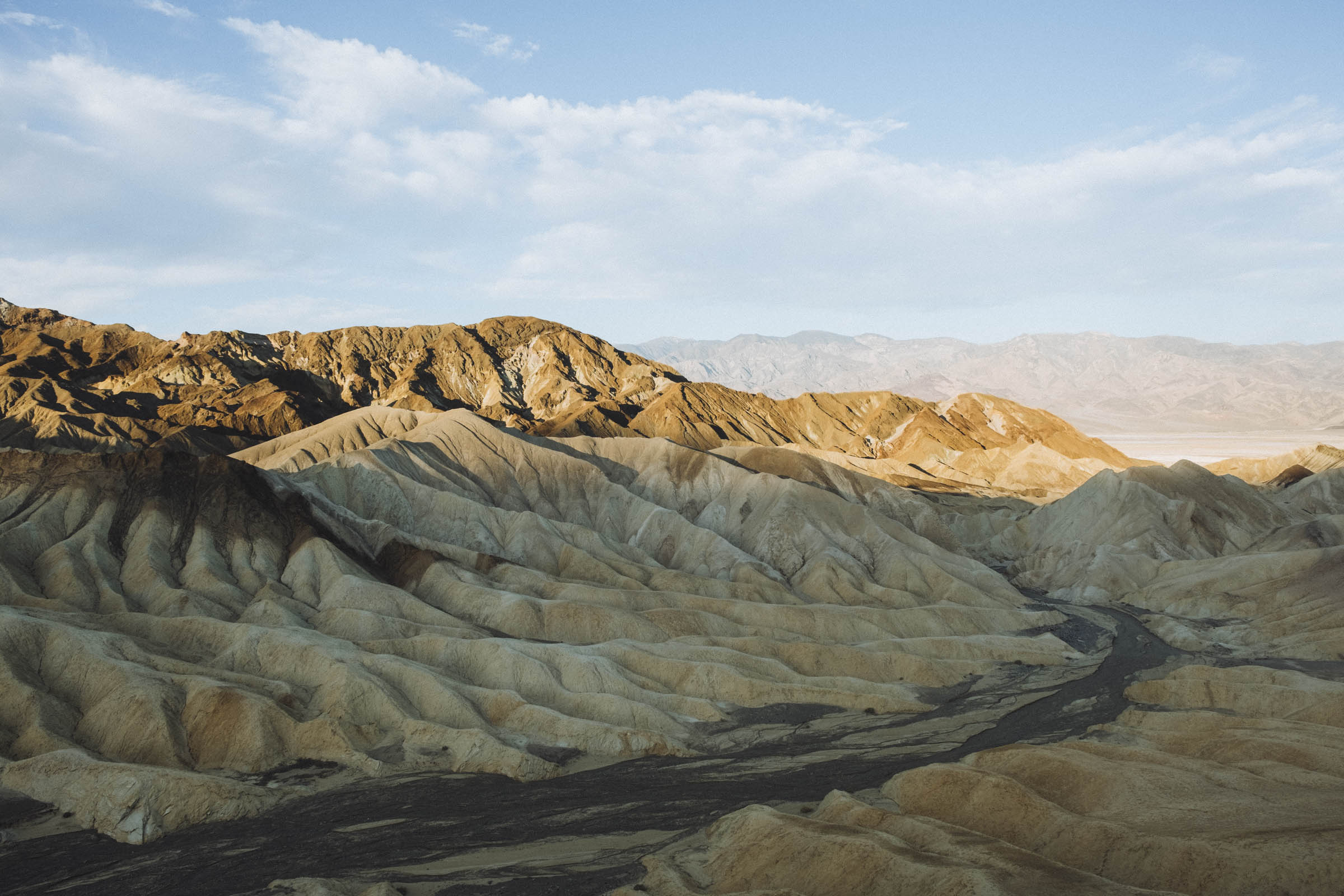


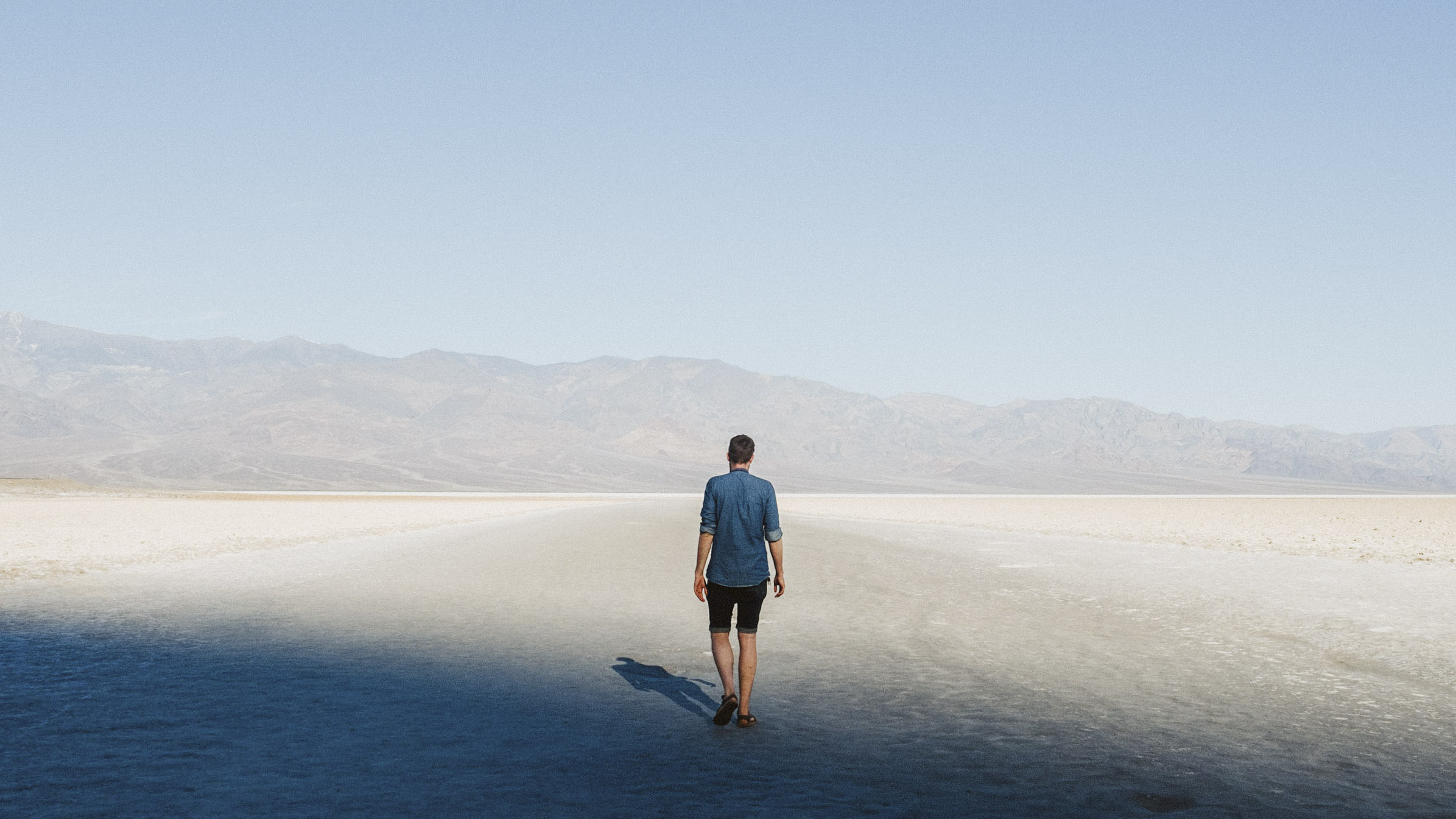
Panamint Mountains
This extreme heat is owed to Death Valley's unique geography. First, the extreme aridity: weather systems moving inland from the Pacific Ocean must pass over mountain ranges as they travel east, and as the clouds are forced up they cool and the moisture falls as rain or snow on the western side. By the time the clouds reach the mountains' east side, most of the moisture has already been precipitated out, leaving a dry "rainshadow." Four mountain ranges lie between Death Valley and the ocean, each one adding to the intensity of the rainshadow effect. Some years see no rain at all.
The clear, dry skies above Death Valley and the general lack of trees or plants allow the sun to continually bake the ground. The hot air rises, but the narrow valley and steep mountain walls trap the air, recycling it back down to compress and reheat further still like a cruel valley-sized convection oven. The heat just builds and builds and builds and by 9am we already found it unbearable.
In the heat of the day you really only have two options: find somewhere with air conditioning (like the visitor centre) or escape to the hills. Temperatures can drop 5°F with every 1,000ft of elevation gained, and Death Valley is surrounded by some pretty high hills. The highest mountain in the park is Telescope Peak at 11,330ft (3455m), but we were too tired for a 14 mile hike. So we took the Wildrose Road up the Charcoal Kilns and just had a siesta instead.
Death Valley has a rich history of mining and mineral exploration. The remains of gold, silver, and borax mines are scattered throughout the park, many of the crumbling structures now serving as interpretation sites and a home for bats. The ten beehive-shaped charcoal kilns are among the best preserved structures in the park. Built in 1877, the kilns were only used for two years producing charcoal for the local ore smelters. Walking inside, you can still smell the lingering smoke almost 130 years later.
But even more interesting were the roving herds of wild donkeys scattered across the flowering hills. I had never seen a wild donkey before! They were very cute (but not very friendly).
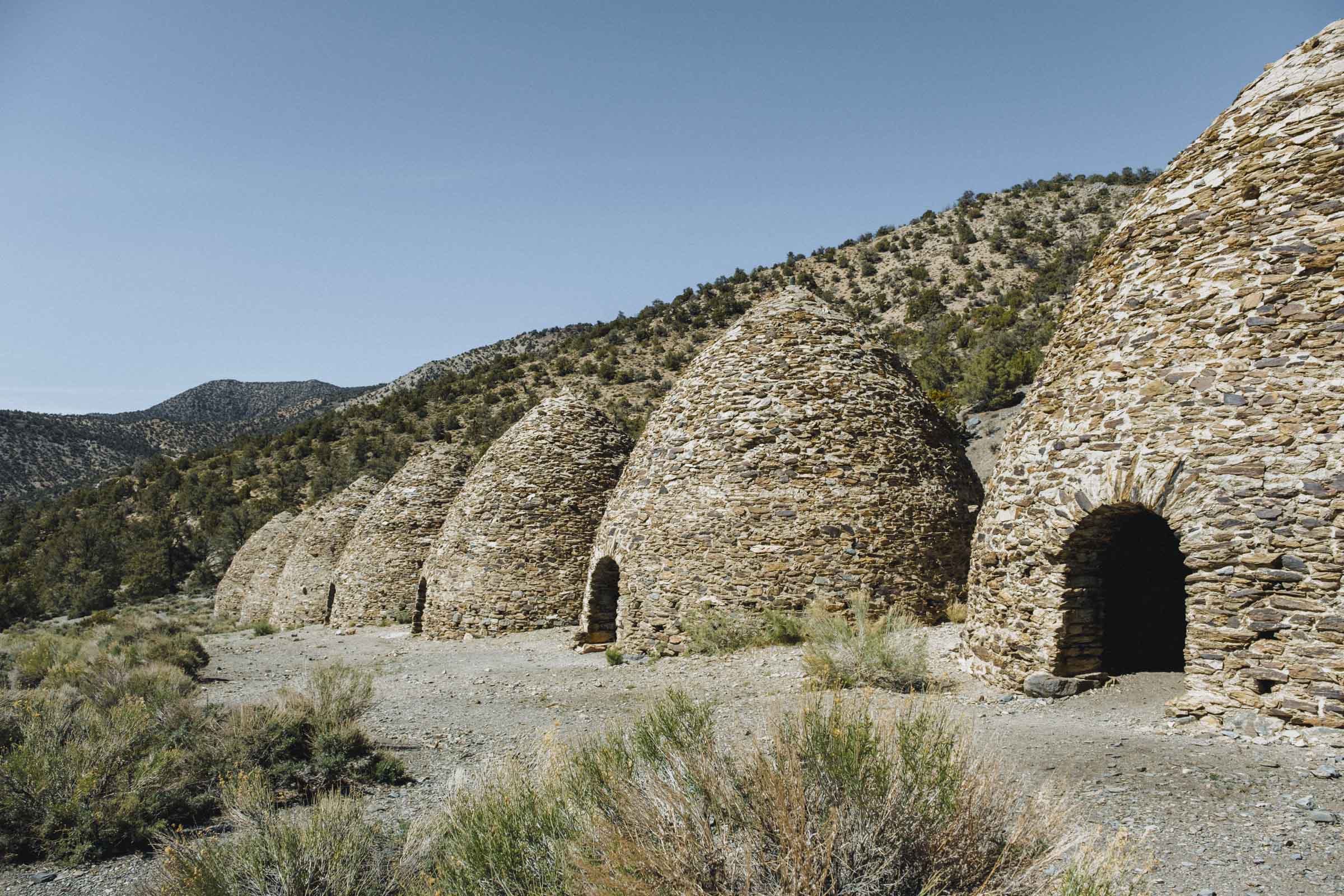
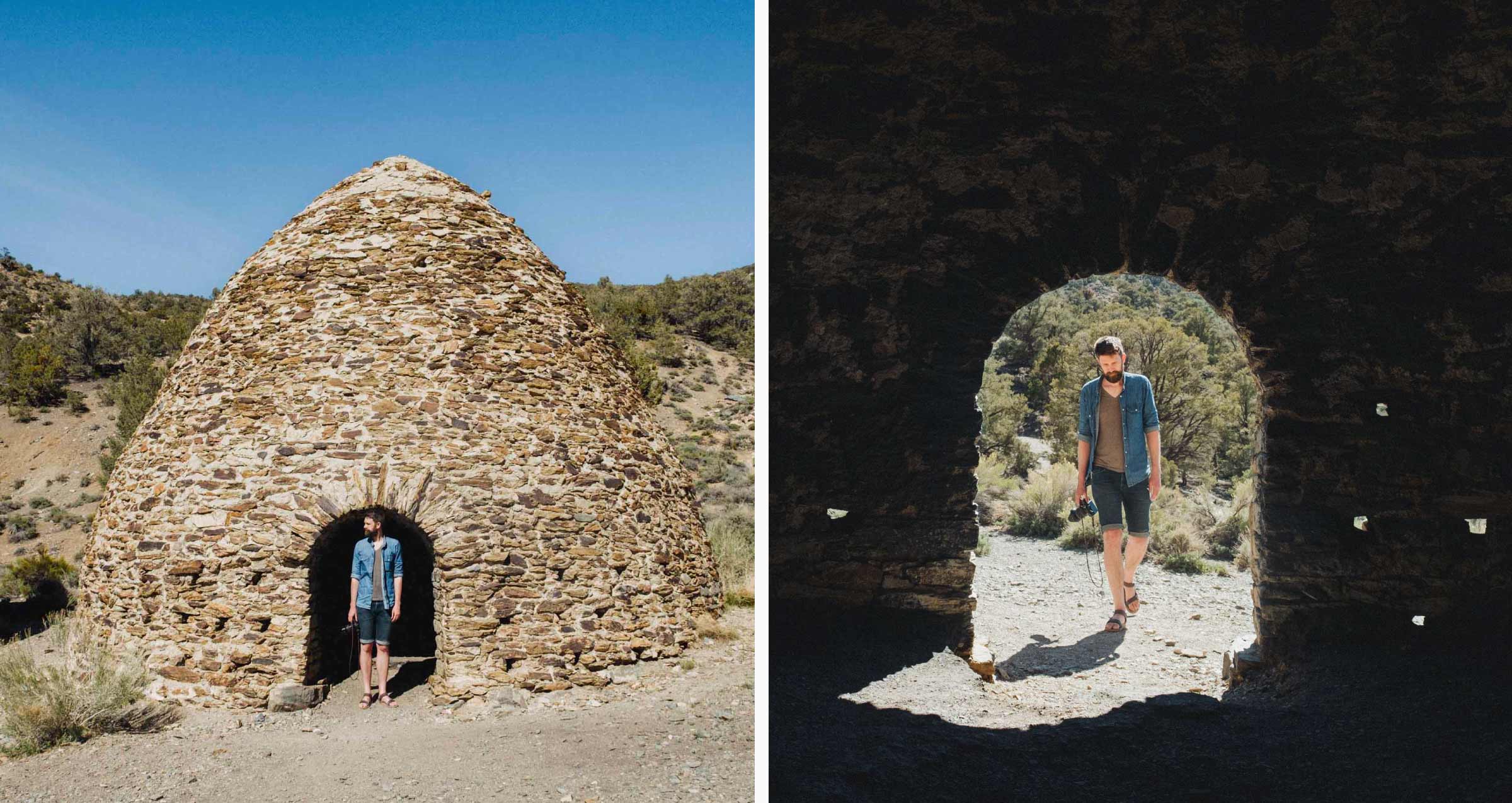
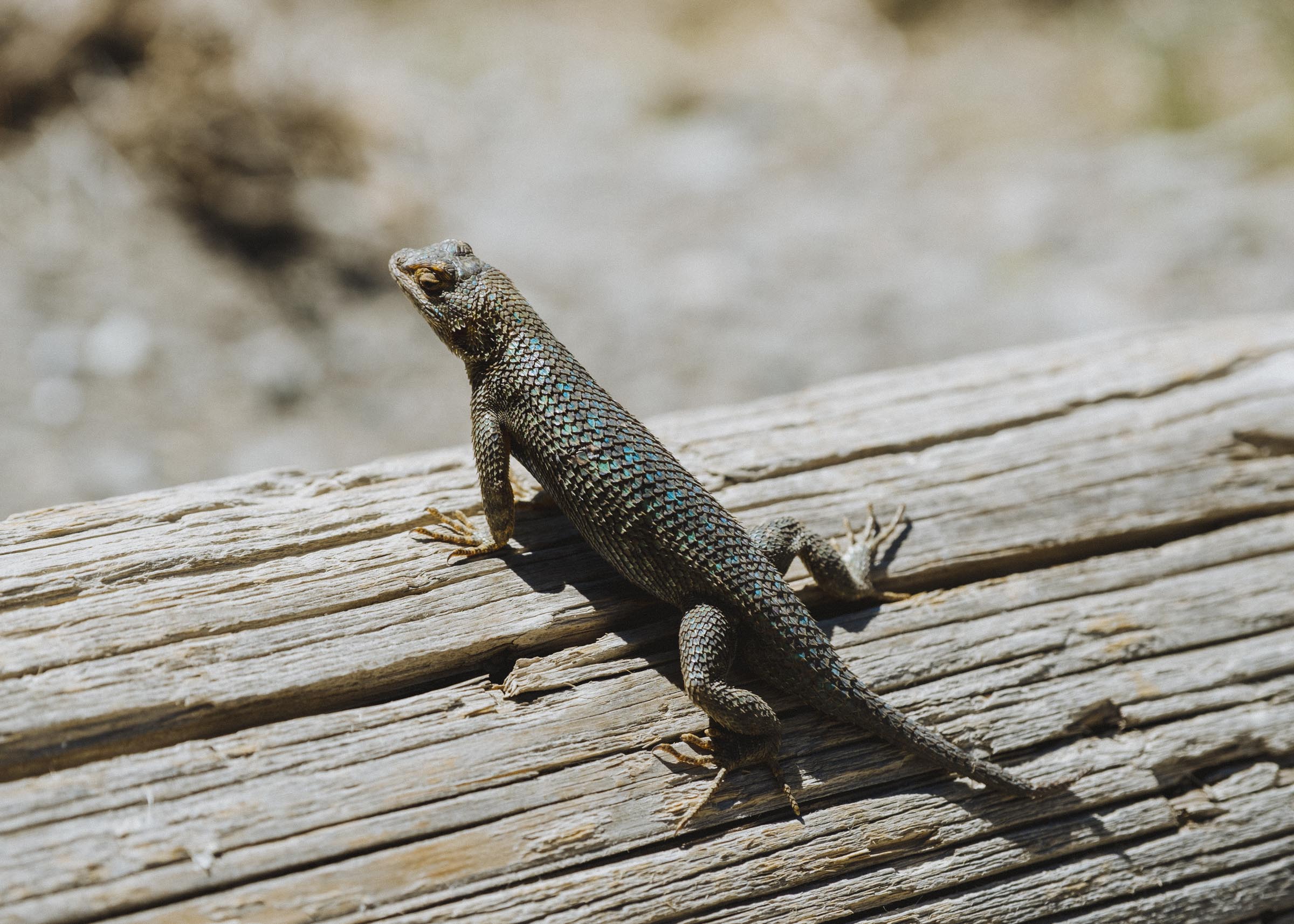
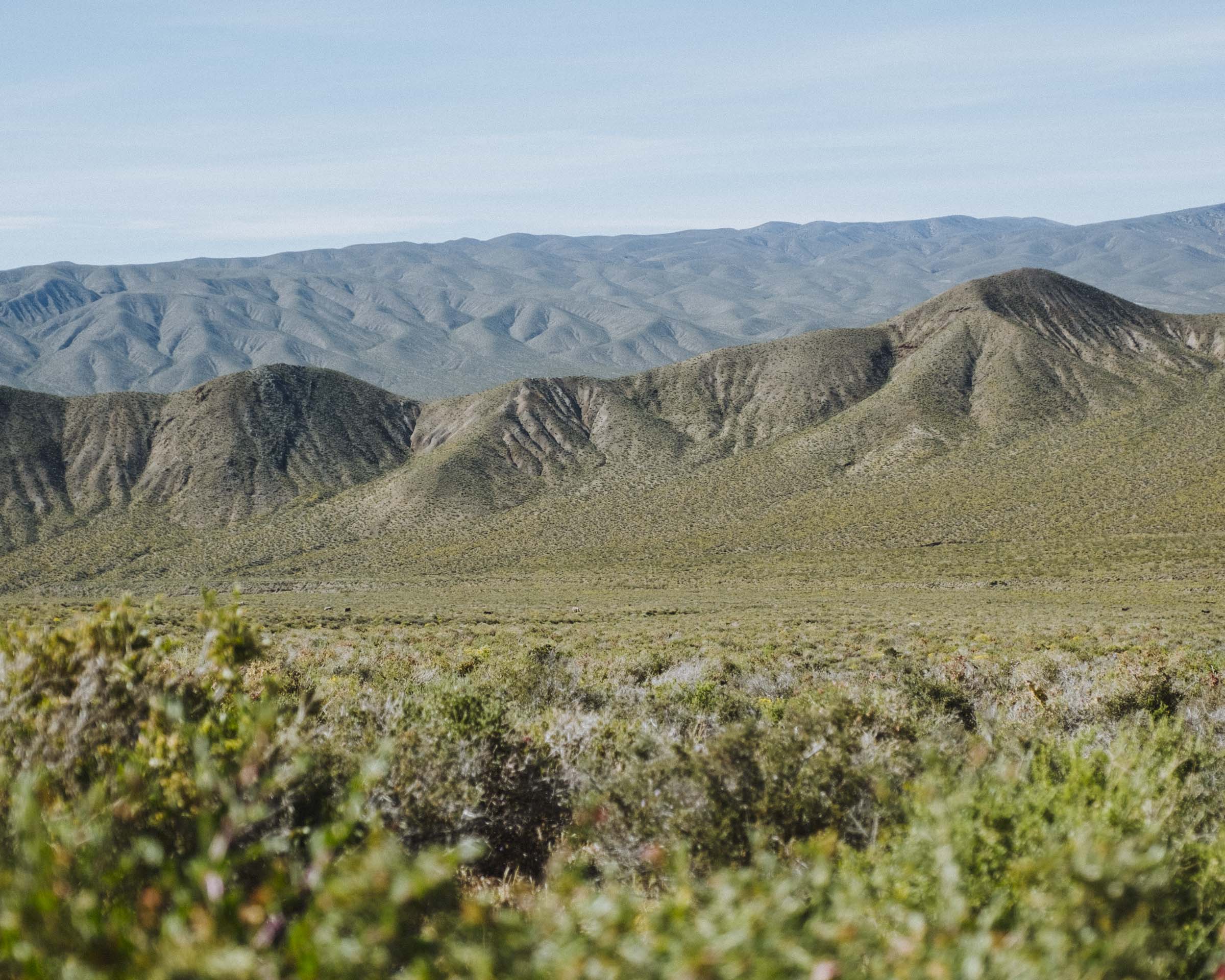
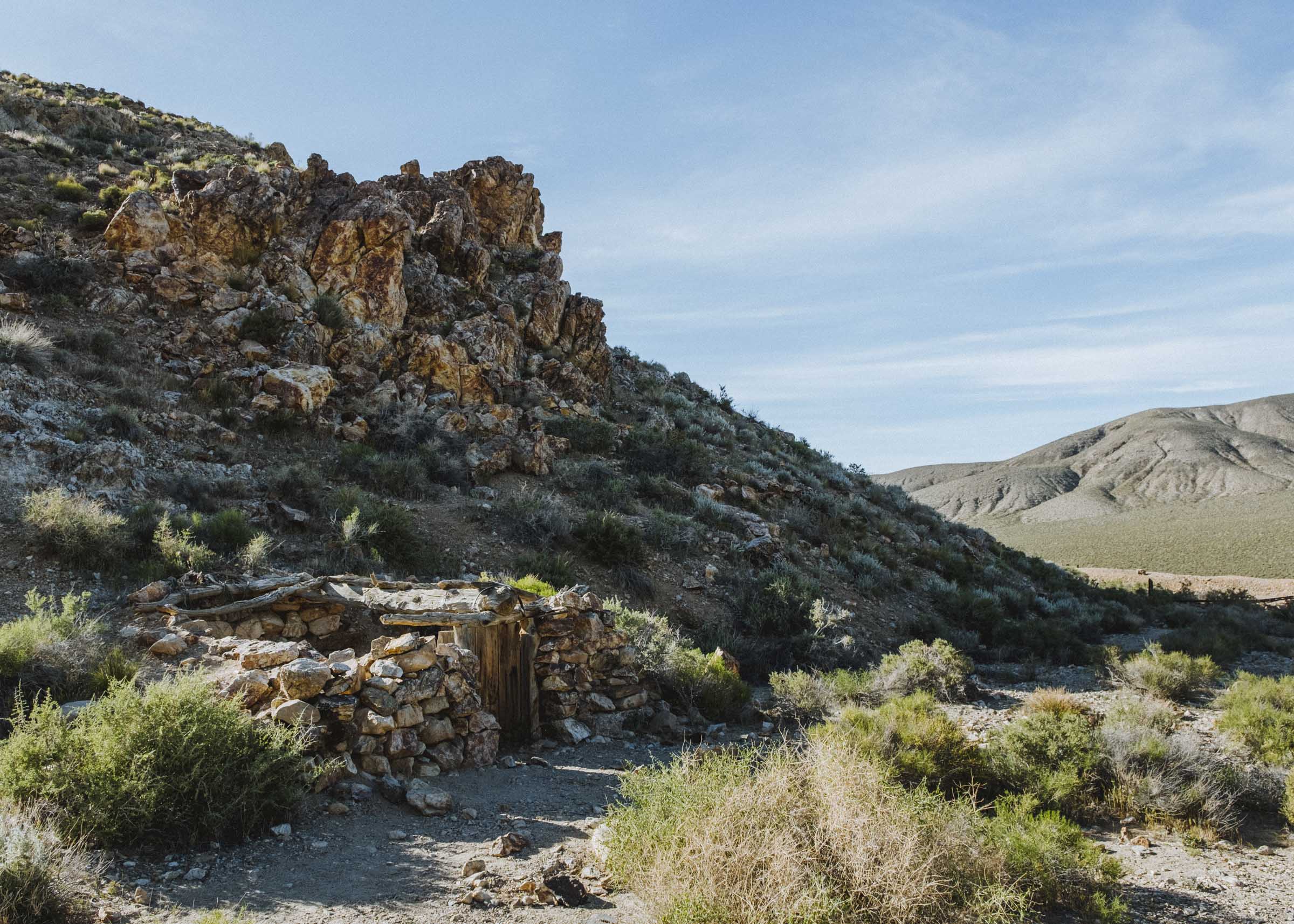
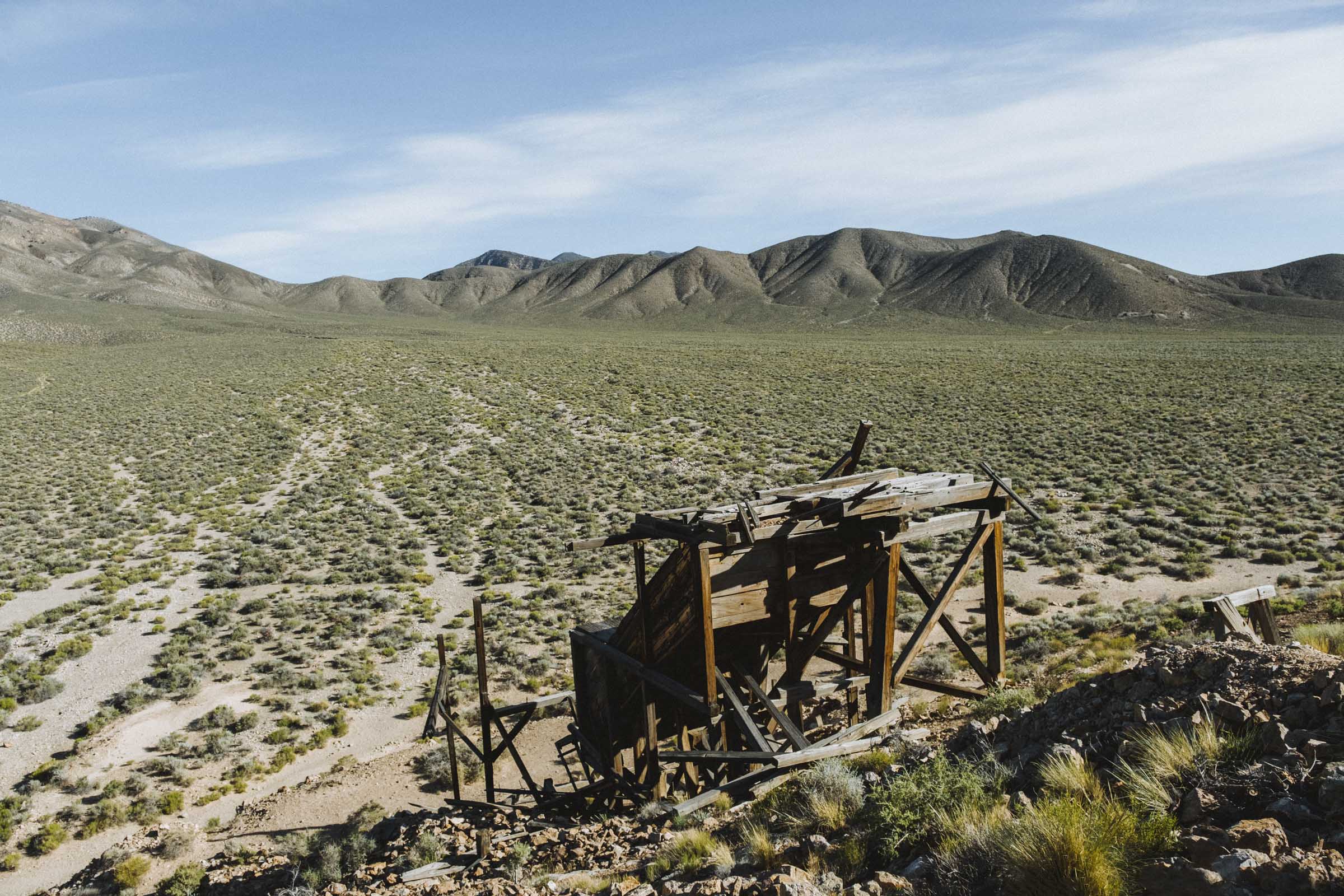

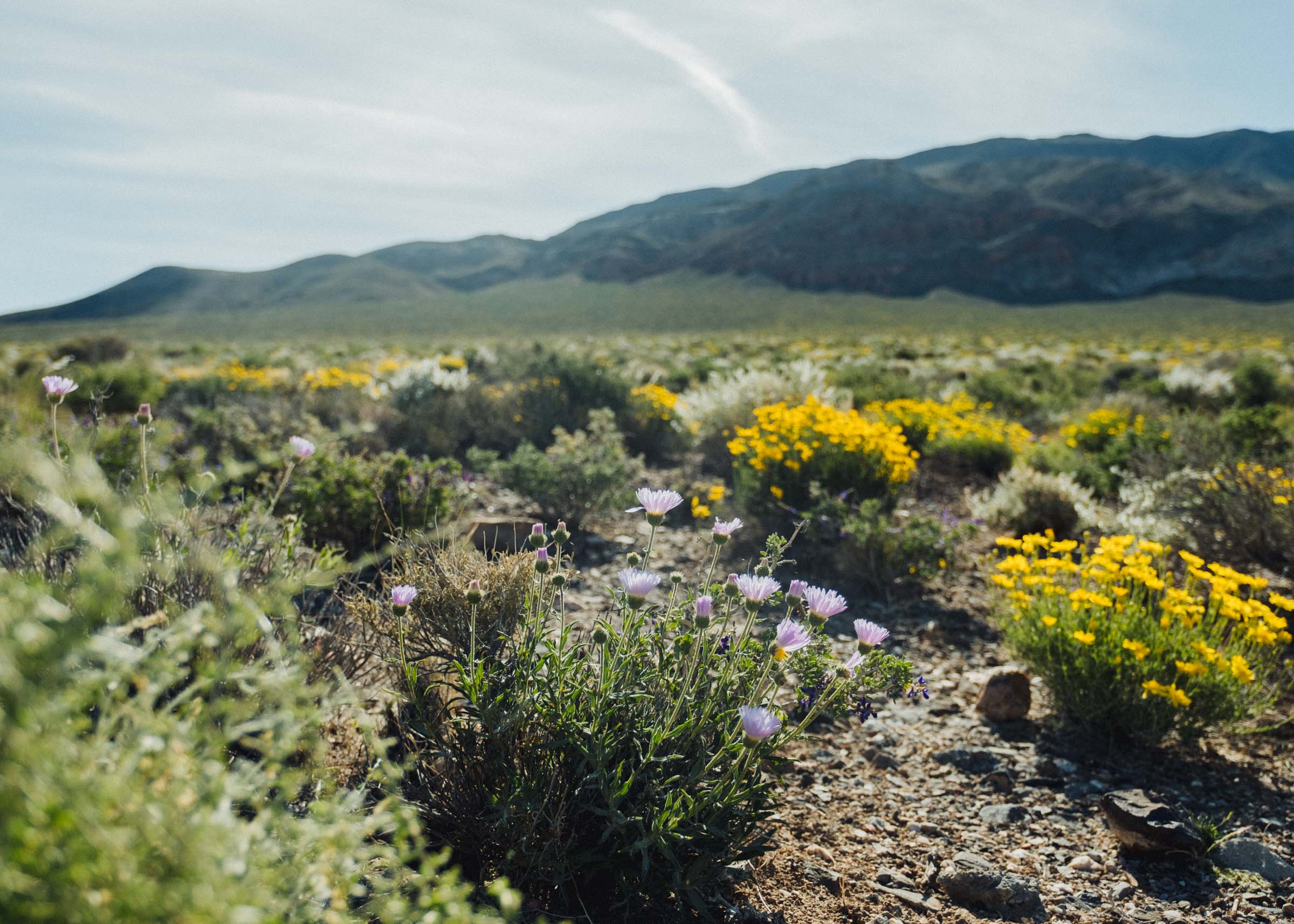
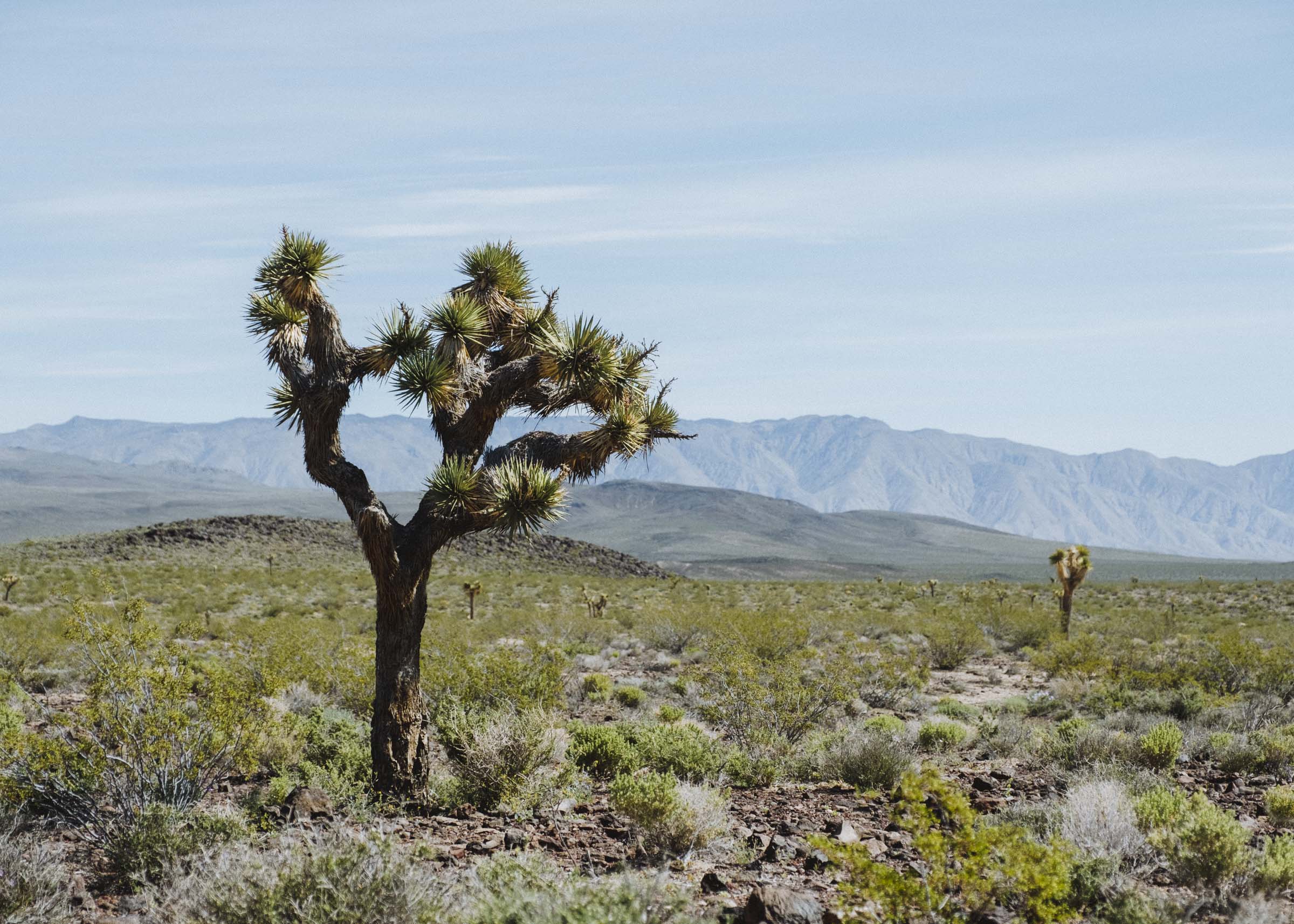
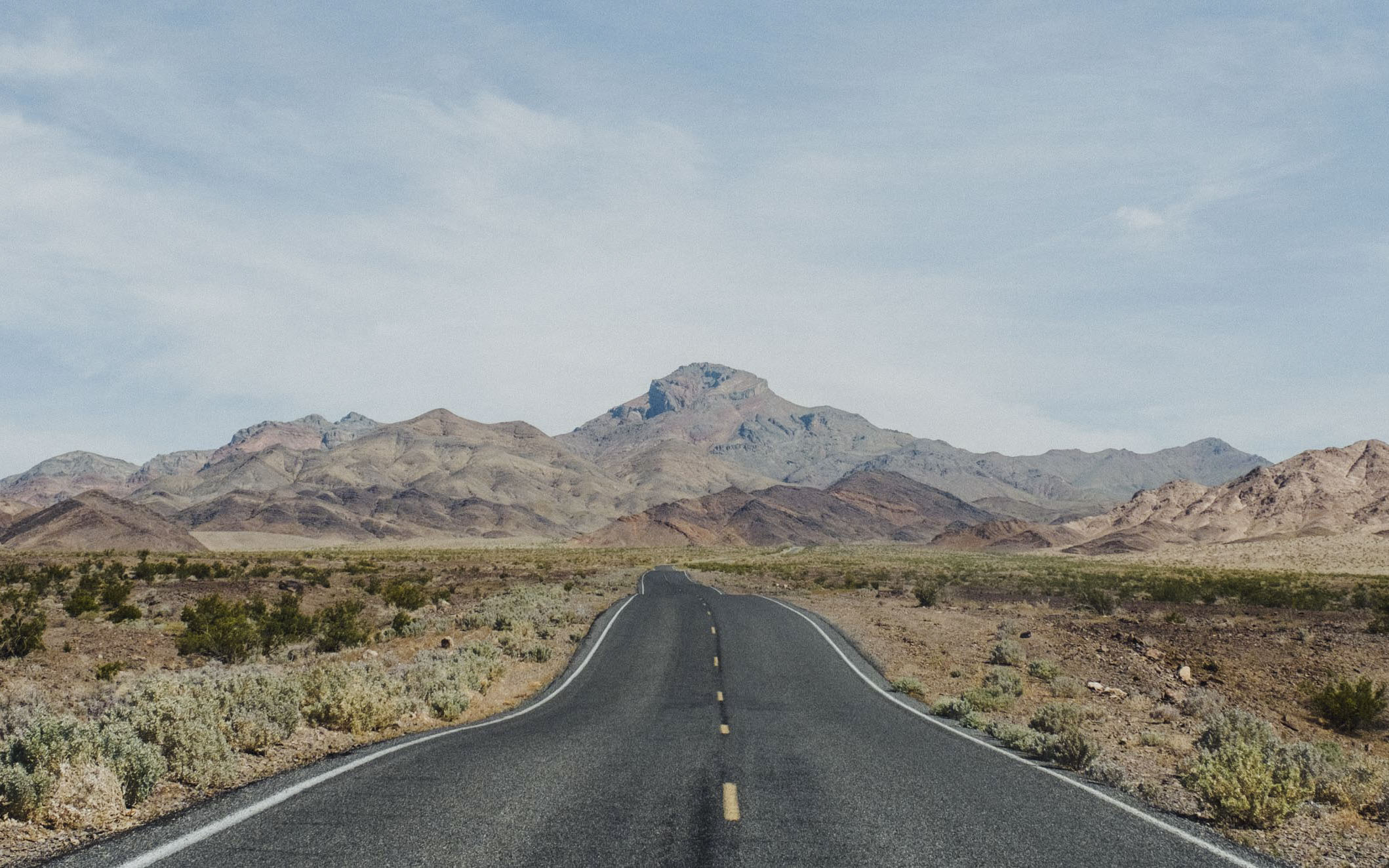
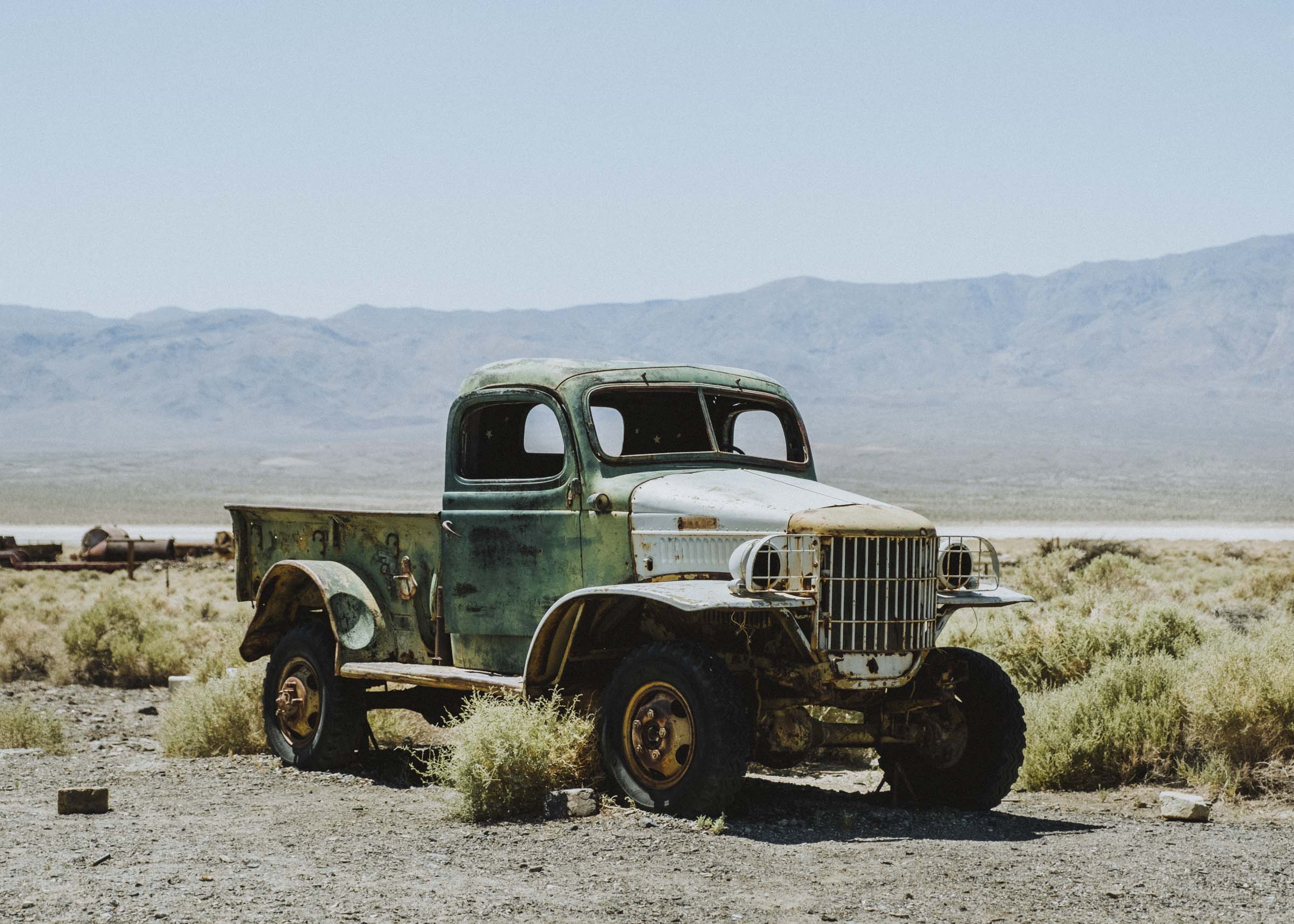
Artist's Palette
Death Valley has a lot of interesting features, but perhaps none are so striking as the Artist's Palette. Located on a short detour up an alluvial fan cut into the Black Mountains, the Artist's Drive leads to a series of formations and hillsides splashed with pinks and turquoise, purples and yellows — the oxidized remains of ash and mineral deposits from a distant volcanic past. Definitely worth a visit.


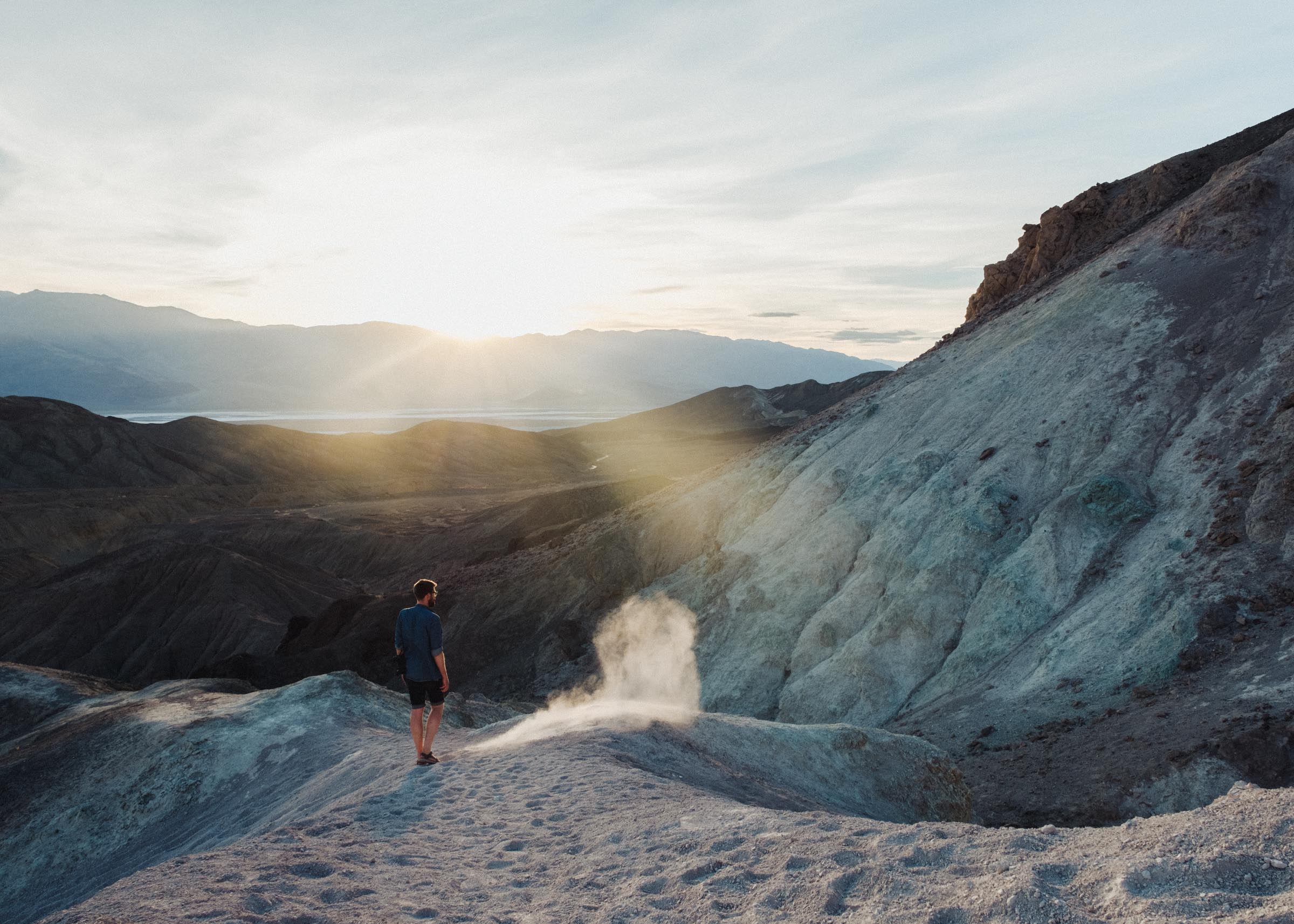
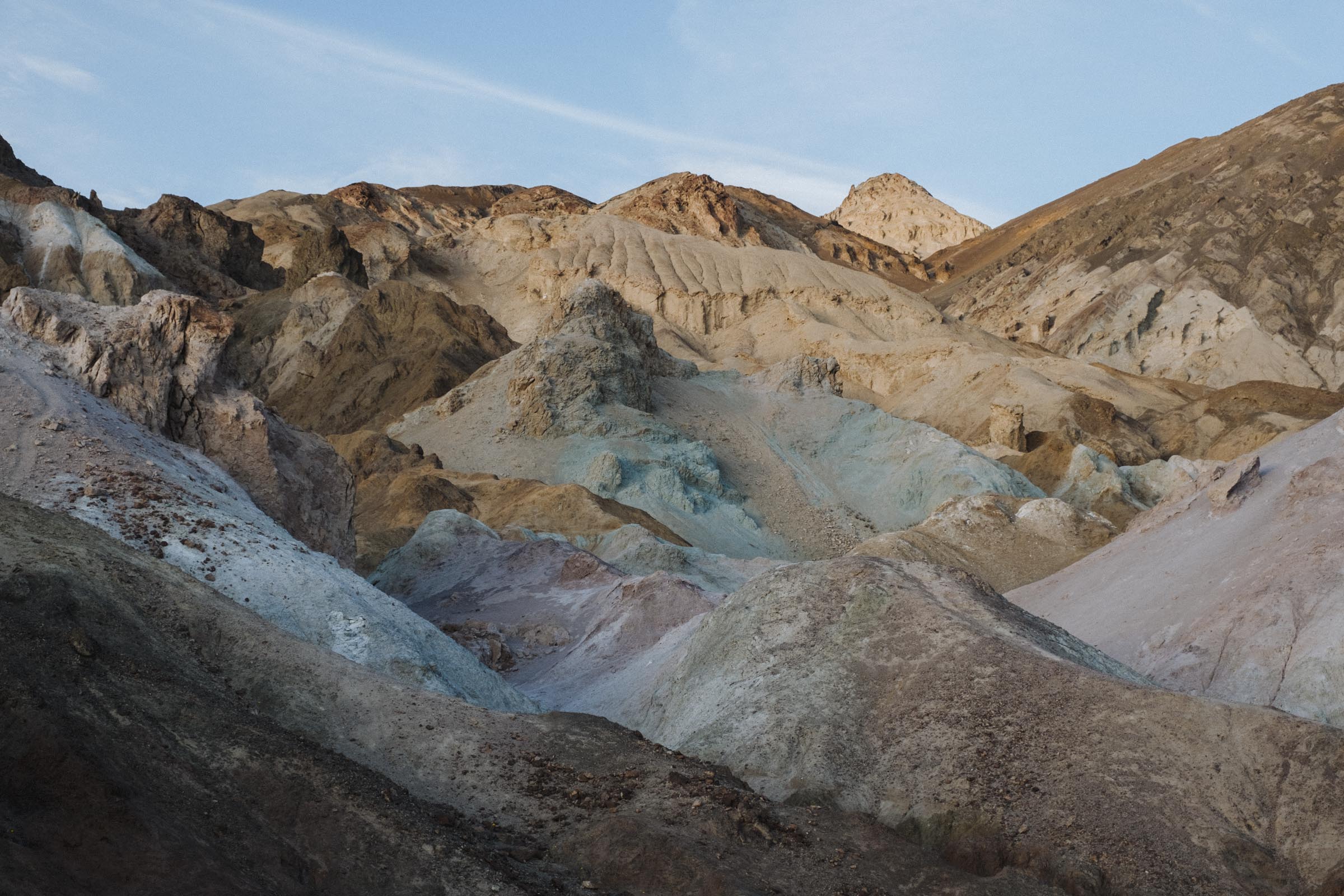




Mesquite Flat Dunes
Nothing says desert like sand dunes, and no visit to Death Valley is complete without a trip onto the Mesquite Flat Dunes. Located right off the highway towards Stovepipe Wells, Mesquite Flat is very accessible and covers a large area for hours of exploring. Sculpted into soft sweeping shapes and steep hills, the dunes are constantly shifting in the wind and no two visits will look exactly the same. One dune remains stationary though, rising above the others like a giant artful curl. Situated where the winds converge, this large dune is a pyramidal mound with three radial arms, kinda like a star.
The dunes heat up quickly in the sun, so like most places in Death Valley it's generally recommended you visit in the morning. It can feel like quite a hike, every footfall sinking in as you scramble up the steep banks, and we only made it maybe two thirds of the way to the main Star Dune before turning around. Interspersed in the slow sand travel are the hard-packed remains of a cracked clay lake bottom, dotted with mesquite and creosote bushes and a lot of lizard tracks.
Being so accessible, Mesquite Flat is highly trafficked. If you're looking for footprint-free textures you can either skip the main parking lot and approach from the east off Scotty's Castle Rd, or simply check out one of the other dunes, like Ibex or Panamint or Saline Valley. The Eureka Dunes, one of the more striking dunes in the park, are perhaps 10,000 years old and the tallest dunes in North America. As you hike up the sand can collapse around you, creating an ethereal singing sound.

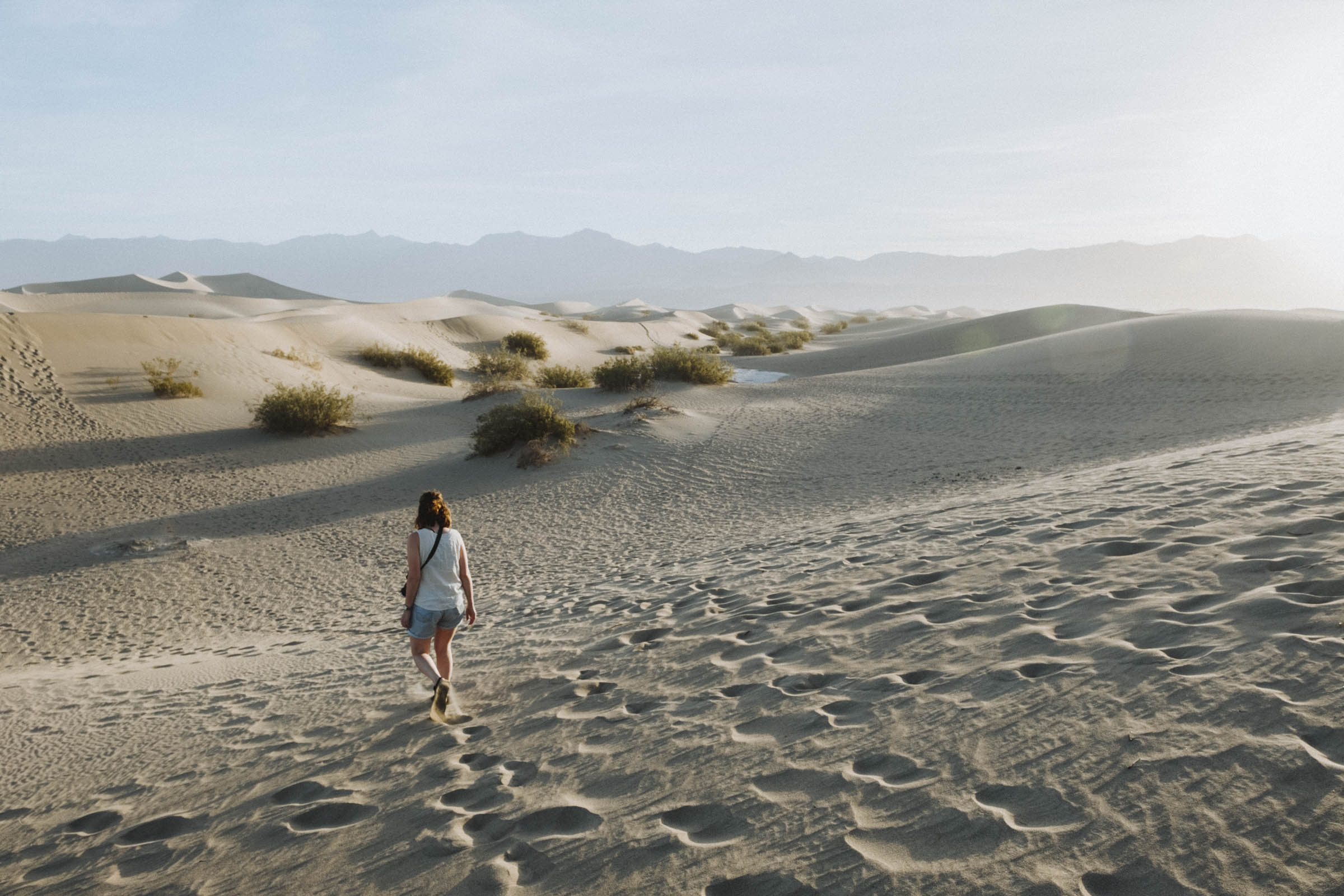
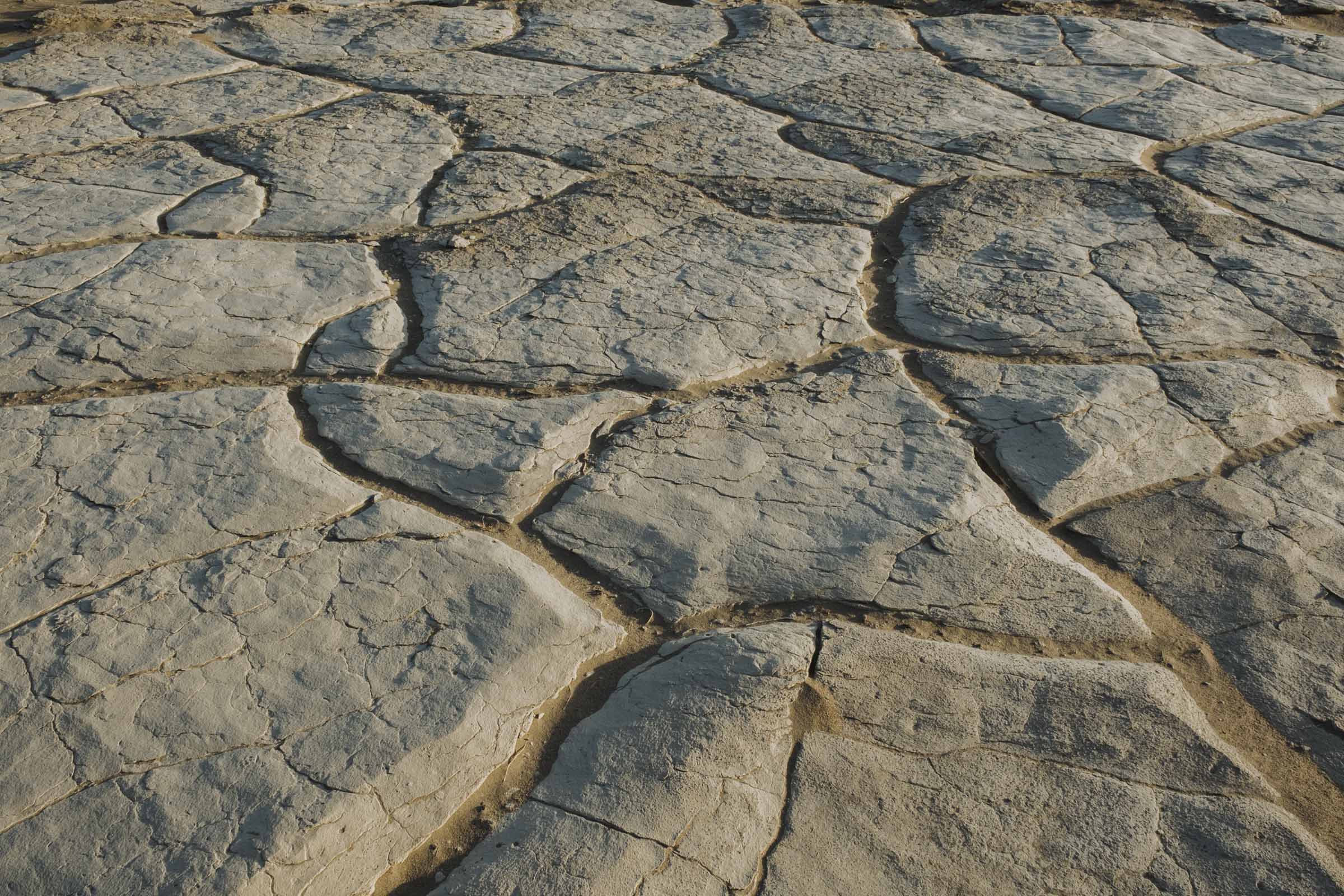
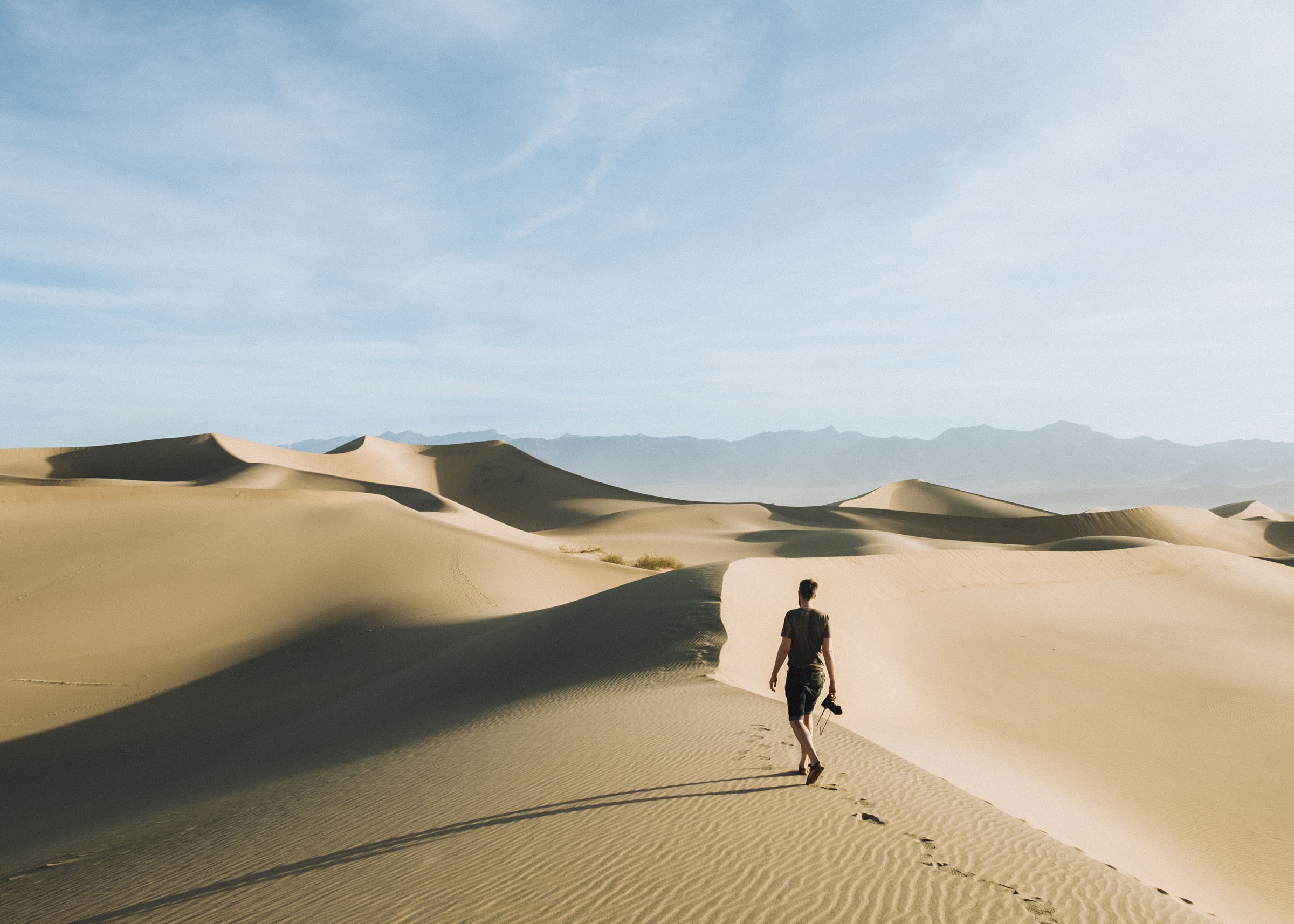

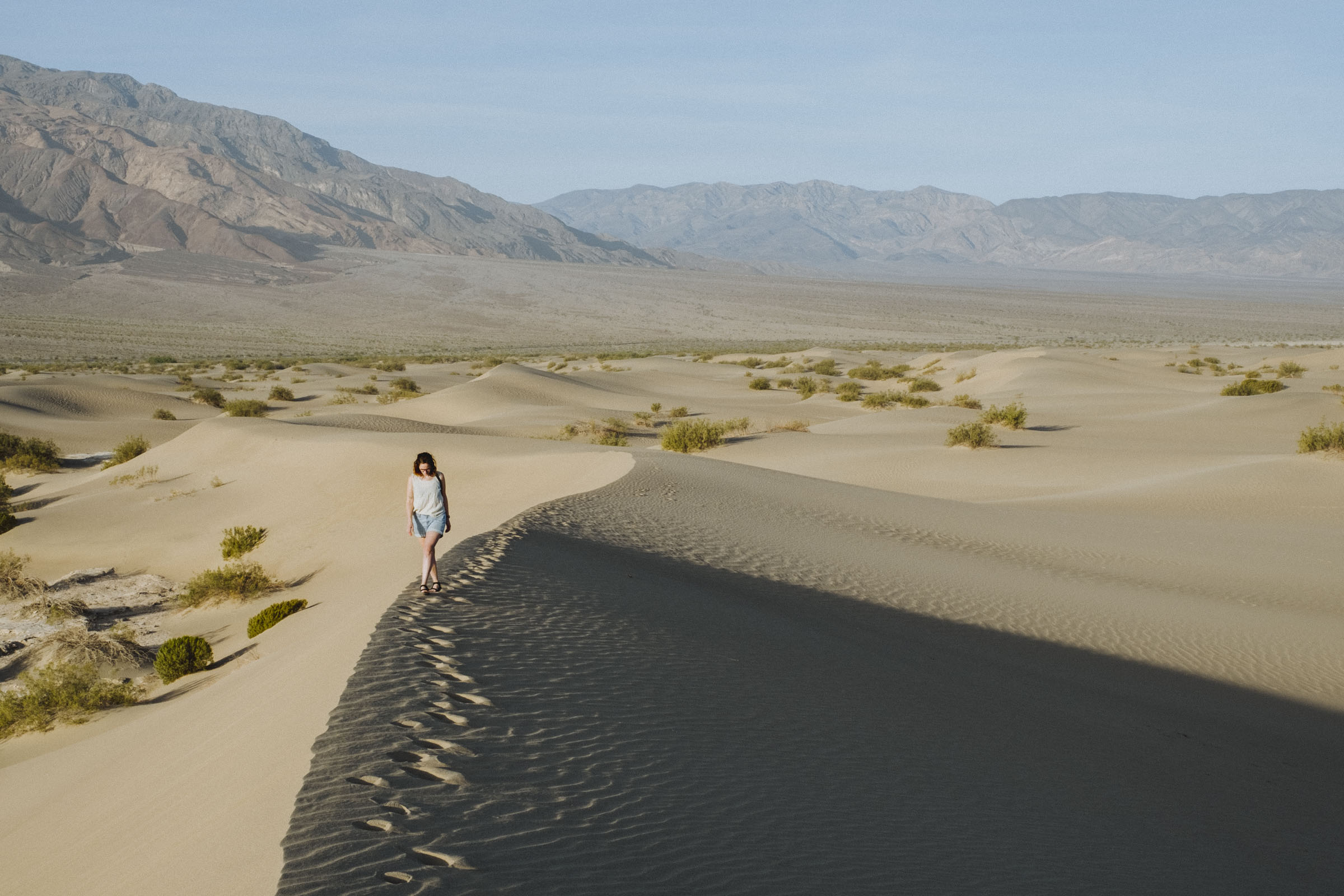
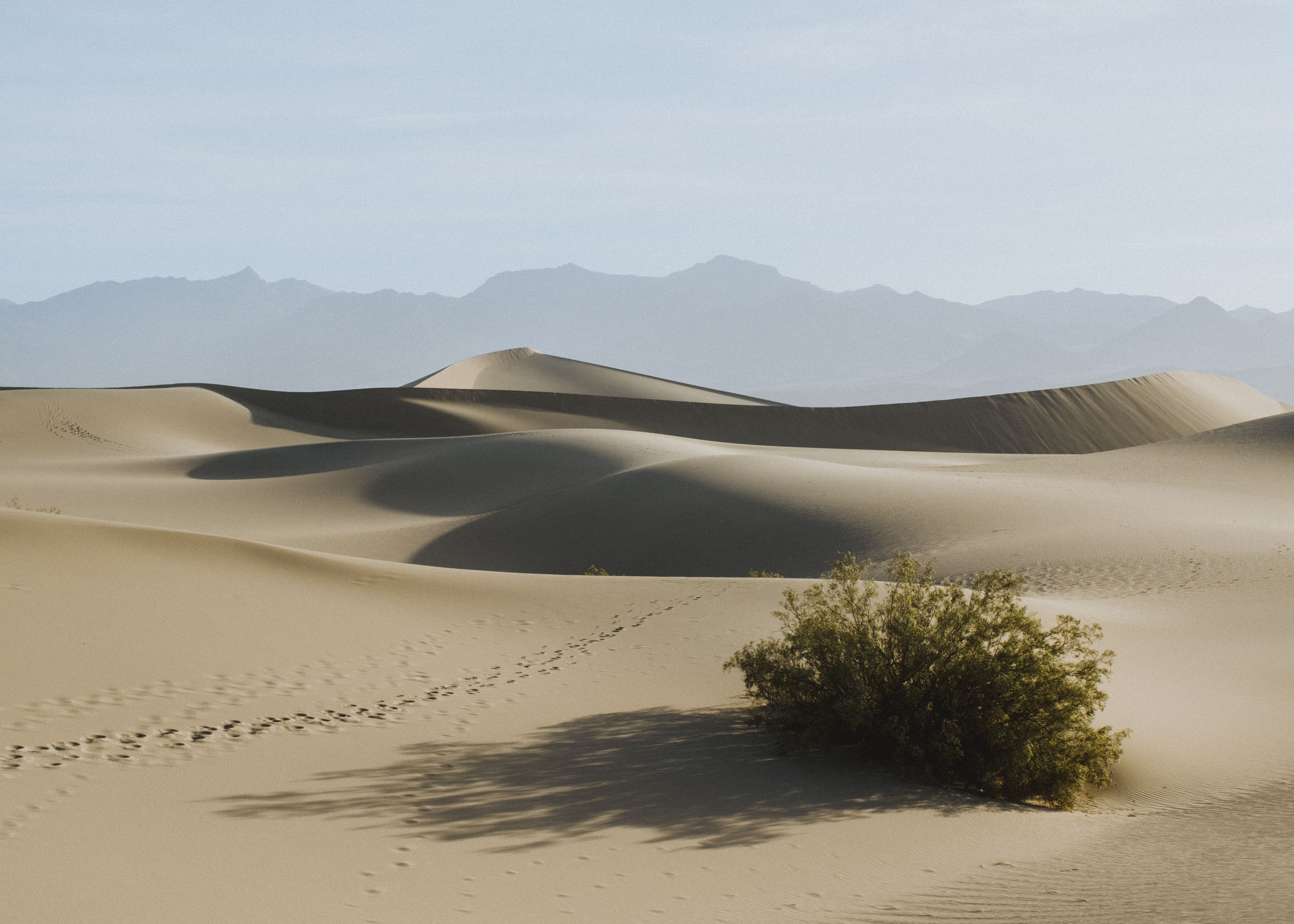
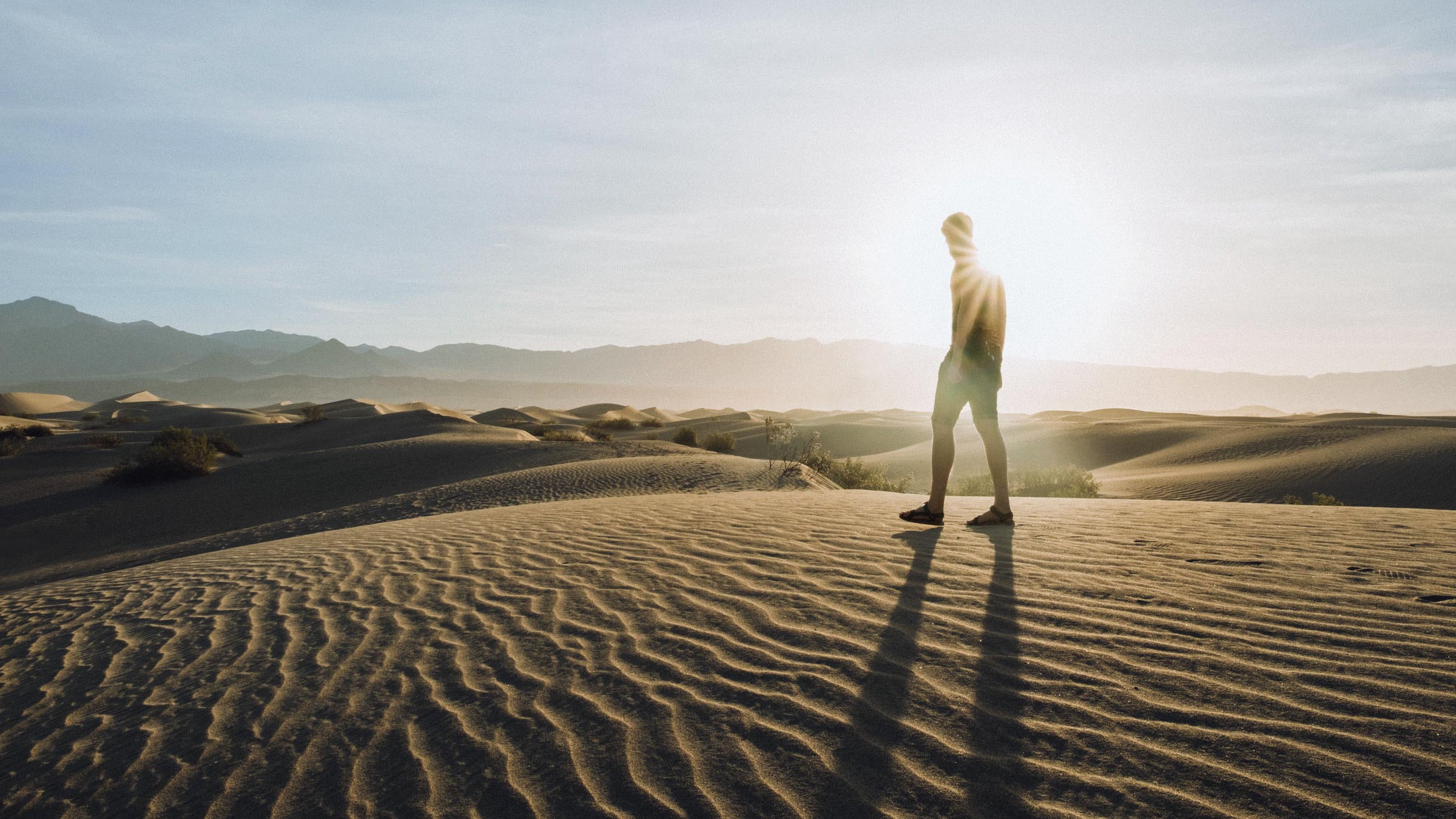

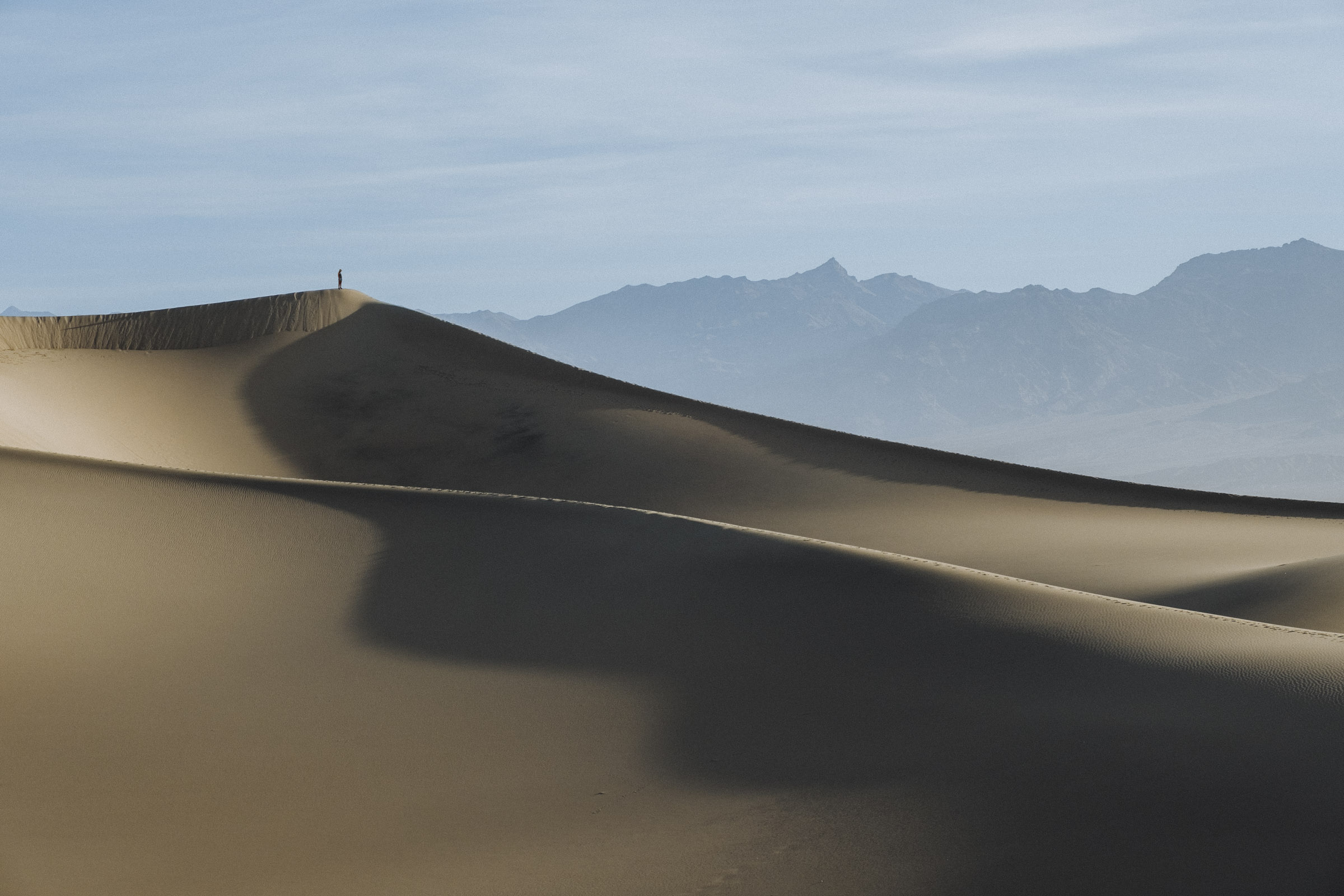
Golden Canyon
Of all the trails in the million-plus acre park, the Golden Canyon is probably the most visited. A labyrinth of colourful and chaotic canyons, it can be explored on its own or used to connect to some longer hikes. Like most places in the park the evidence of powerful erosion is everywhere. You used to be able to drive up the canyon, but flash floods wiped out the roads almost completely, the remains of asphalt visible only here and there. But it's probably nicer as a hike anyway — despite the ravages and reminders of violent flooding, it evokes an almost timeless calm, an expansive and immutable ease.
We hiked up in the evening, the low afternoon light throwing deep shadows on the canyon walls. It's an easy half hour walk to the Red Cathedral, a towering monument of red rocks rising high out of the washes and striated yellow badlands, and in the heat we drank a full litre of water on the way. We had learned to carry water at all times.
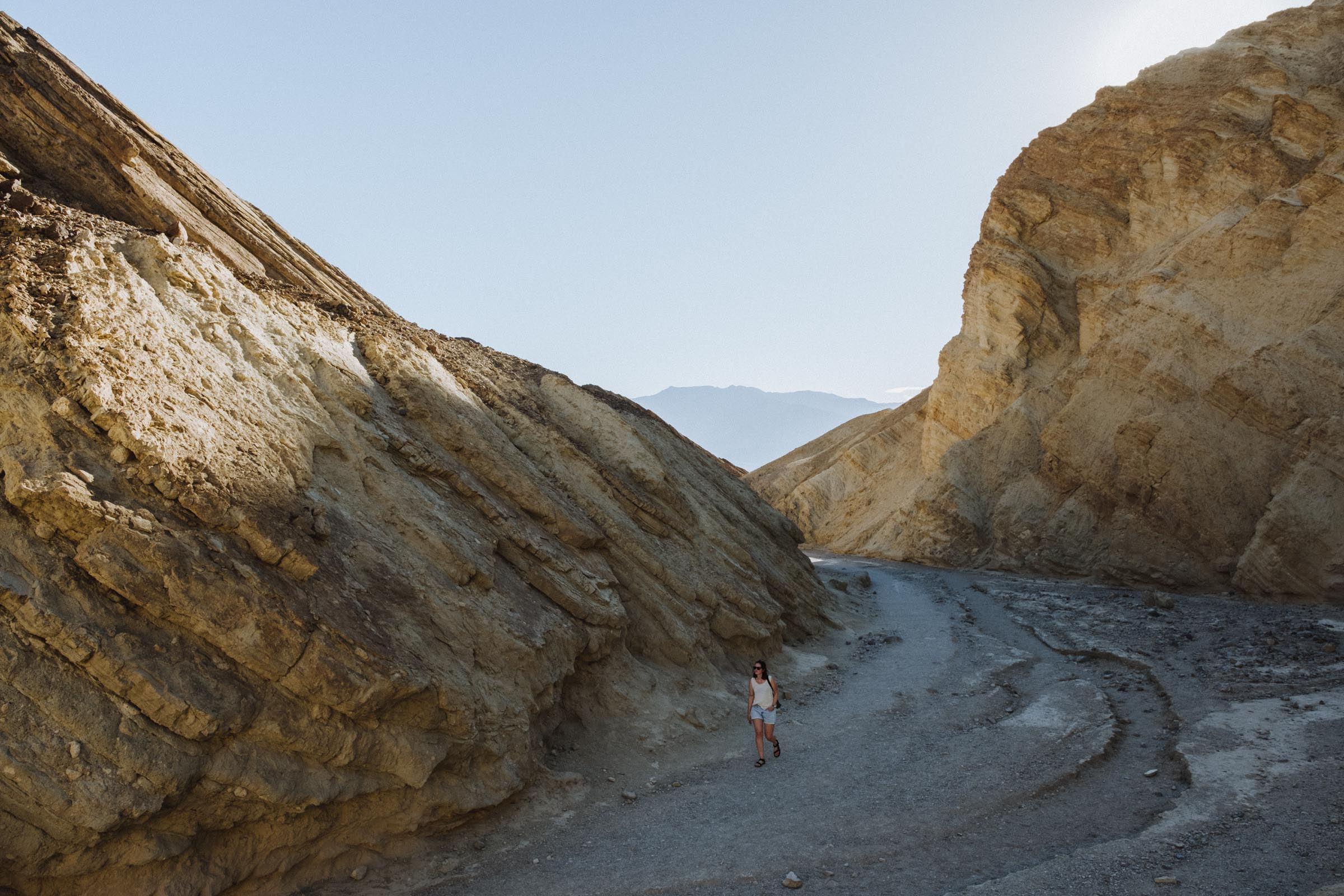




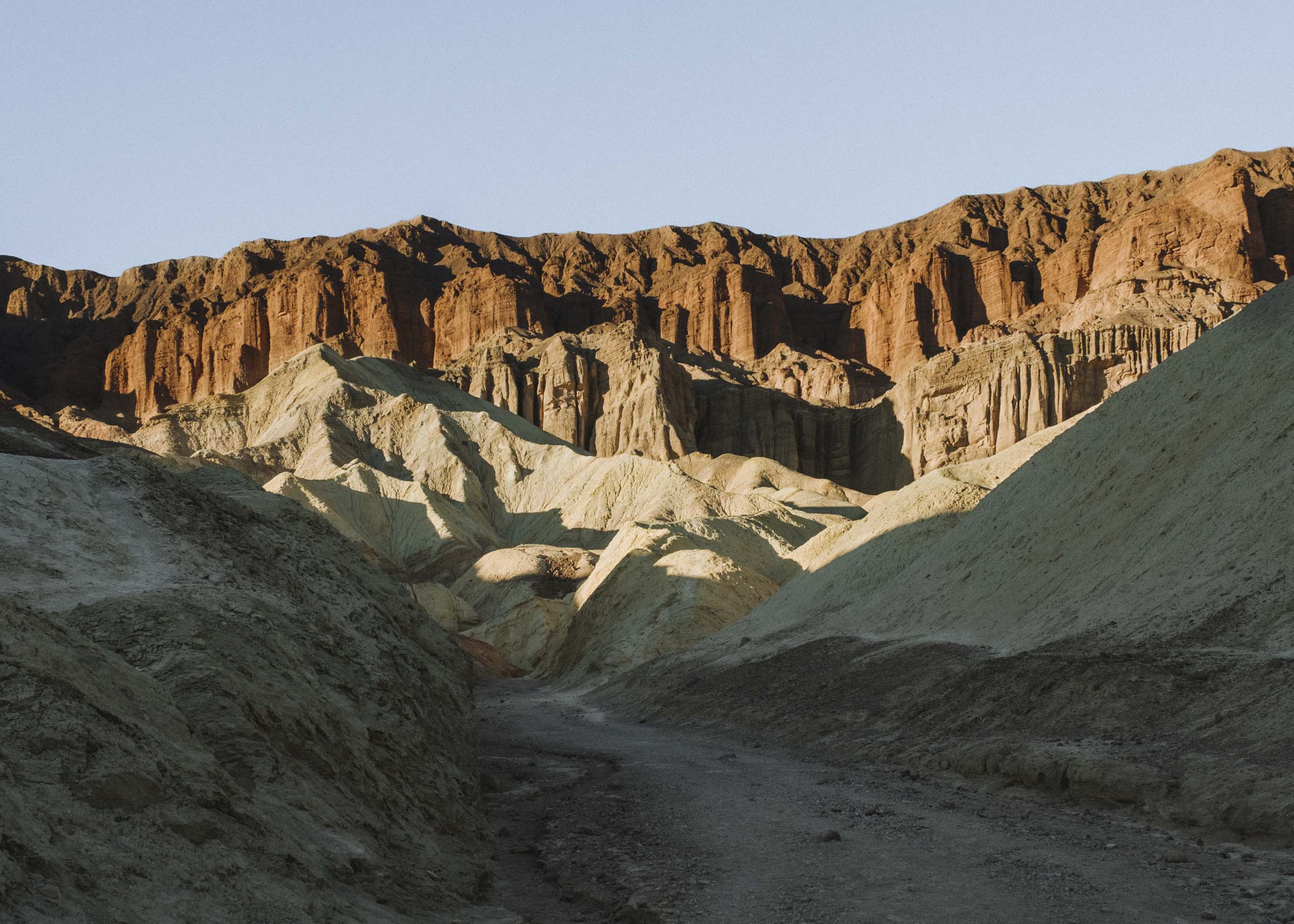
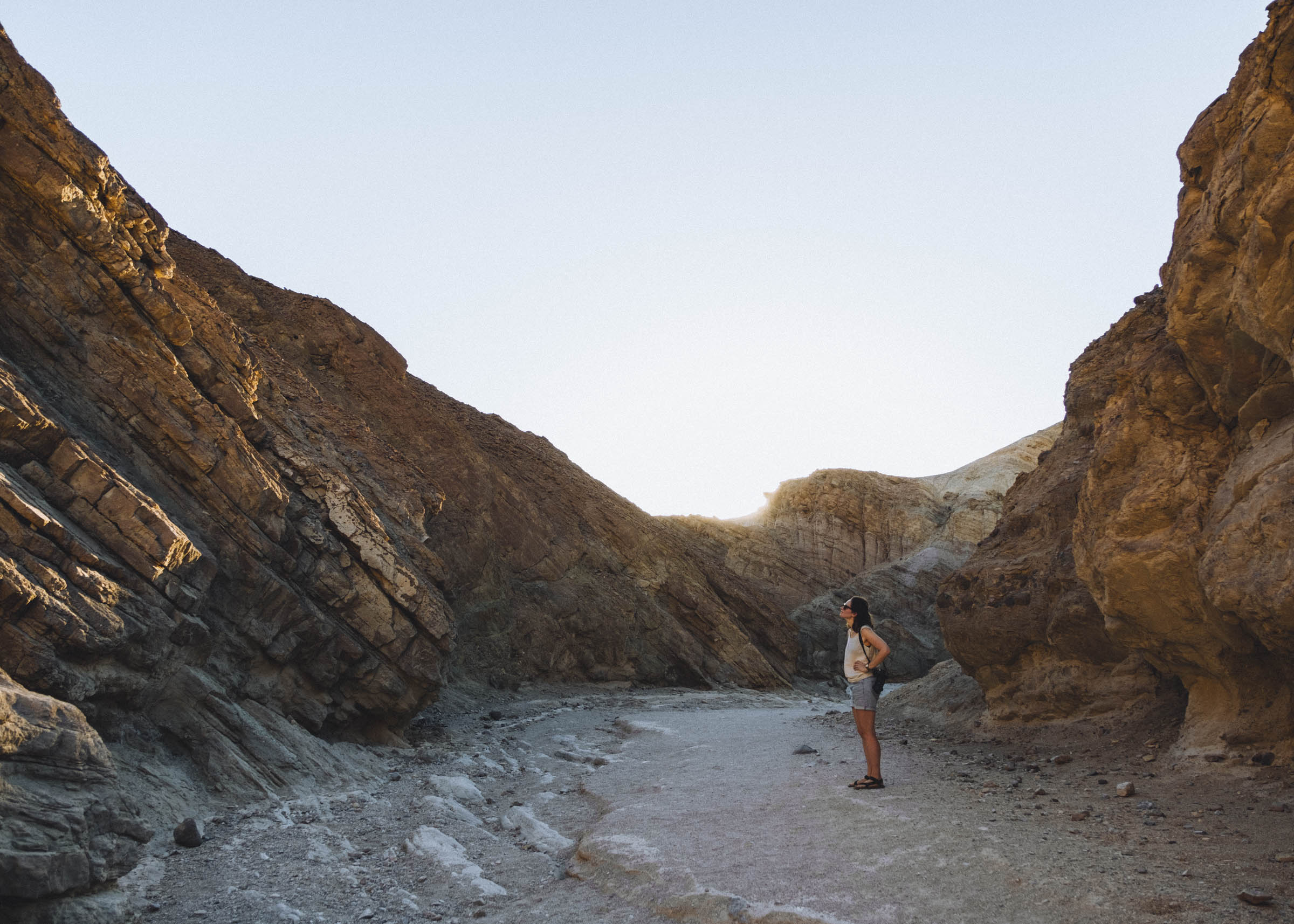
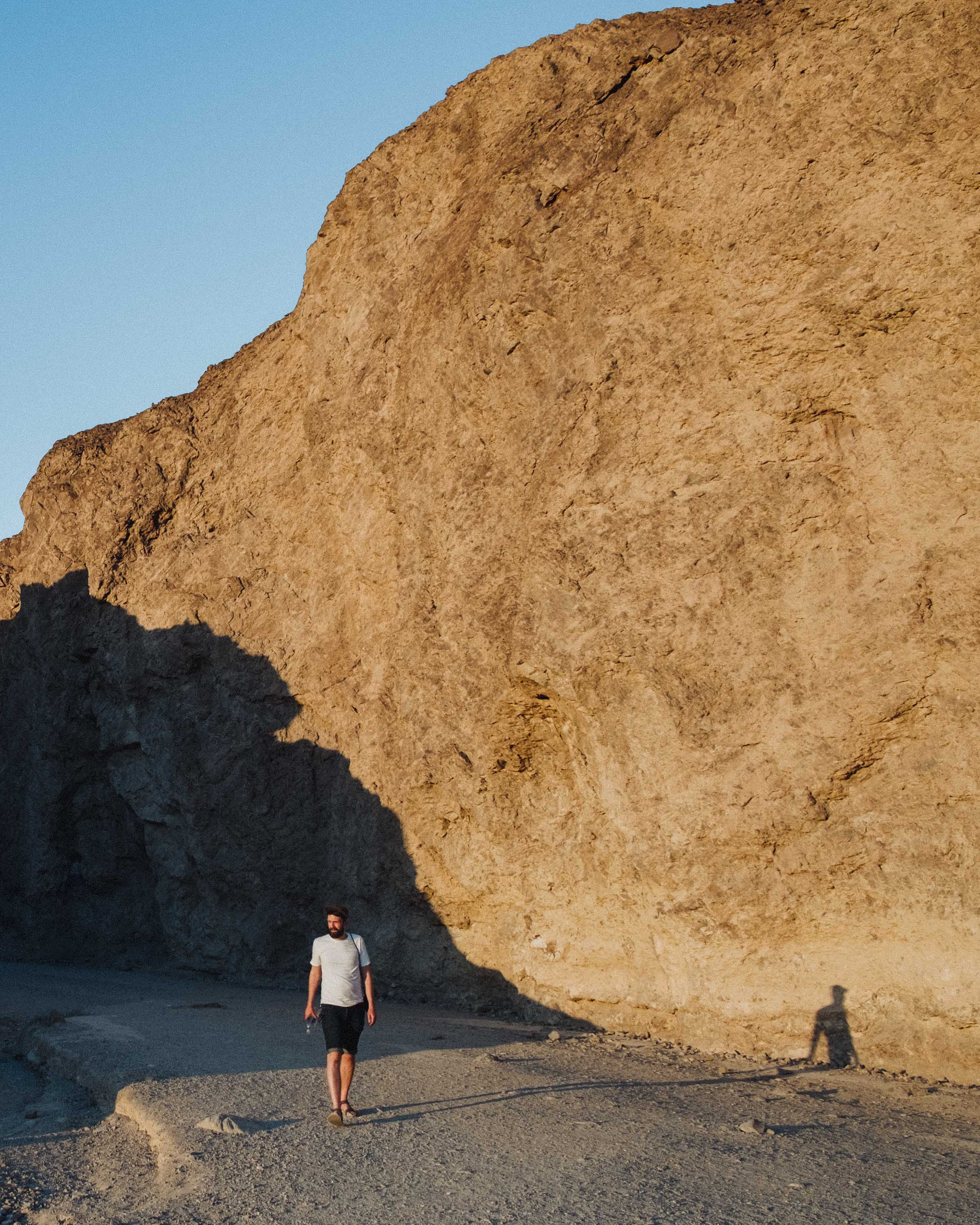
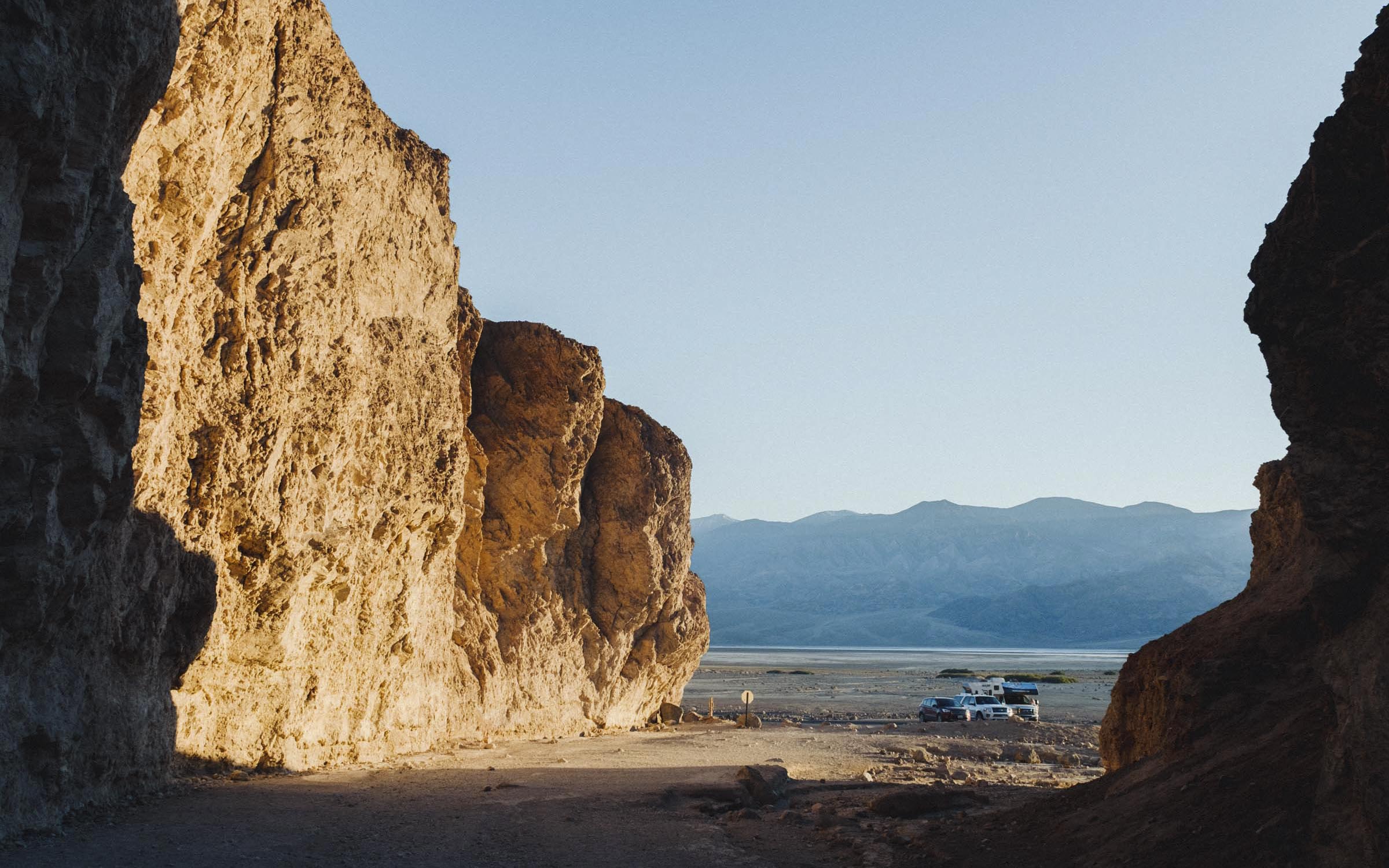
Dante's View
Our last stop was Dante's View to watch the slow bloom of morning unfold. It's a relatively short drive with a big payoff: from the parking lot you get sweeping views over the southern half of Death Valley, including Badwater Basin and Telescope Peak — an elevation change of -282ft to 11,330ft (-86m to 3,455m), the greatest topographic relief in the contiguous US. And on very clear days you can see both the lowest and highest points of the lower 48 at the same time.
As one of the largest wilderness preserves in the US, Death Valley is a great place to see the night sky, and with its altitude and easy access, Dante's View is ideal for star gazing. Pack your telescopes!
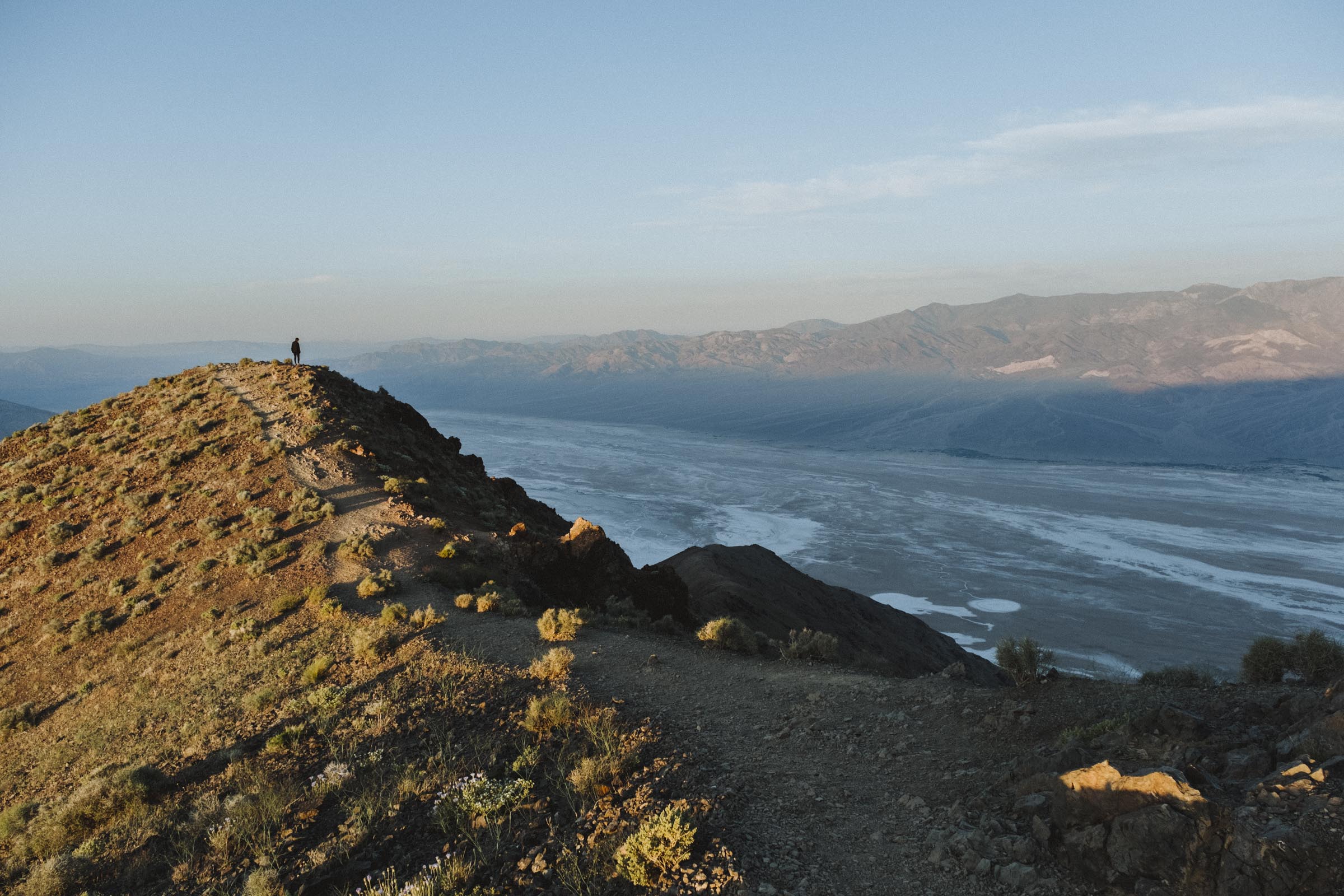
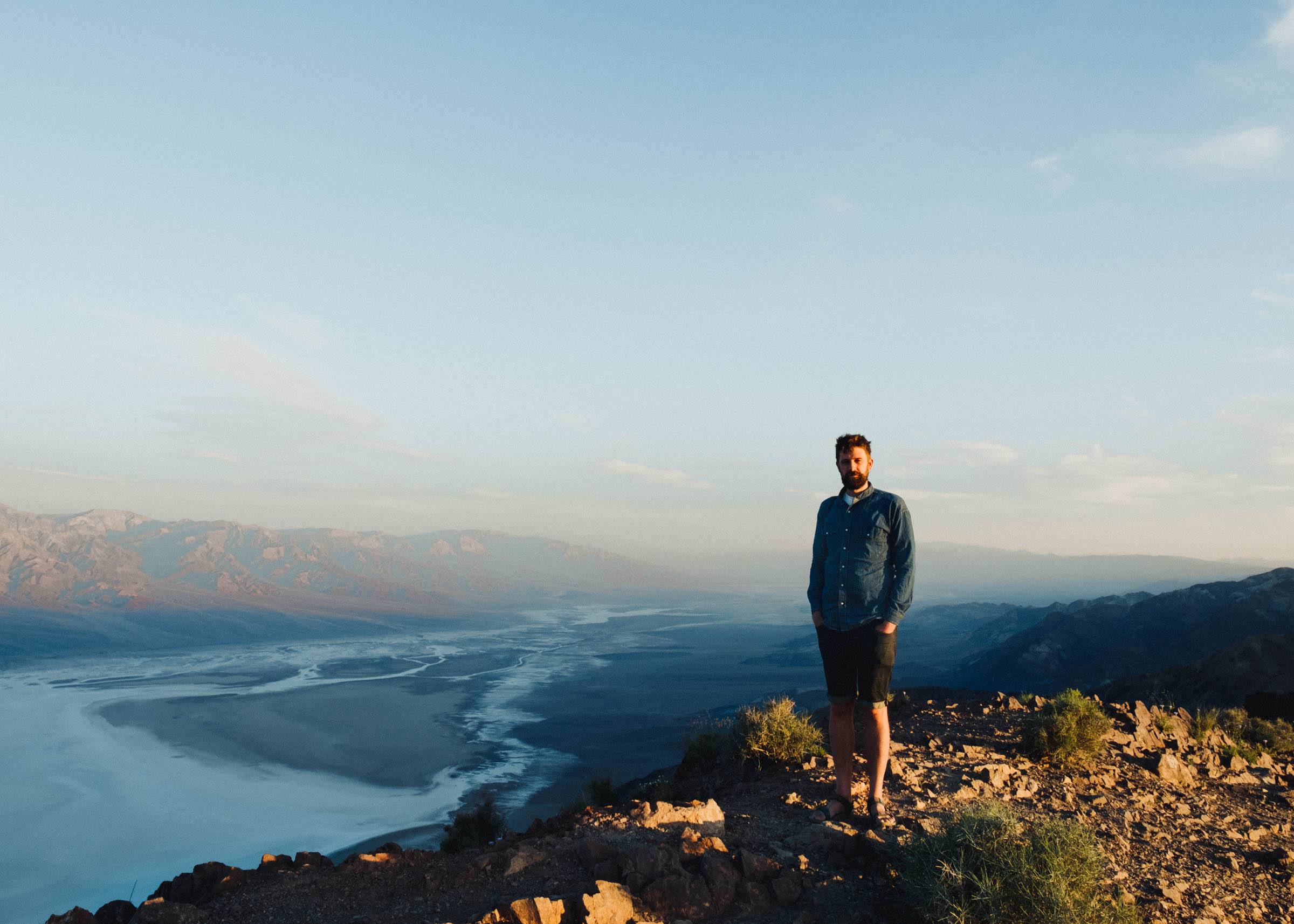
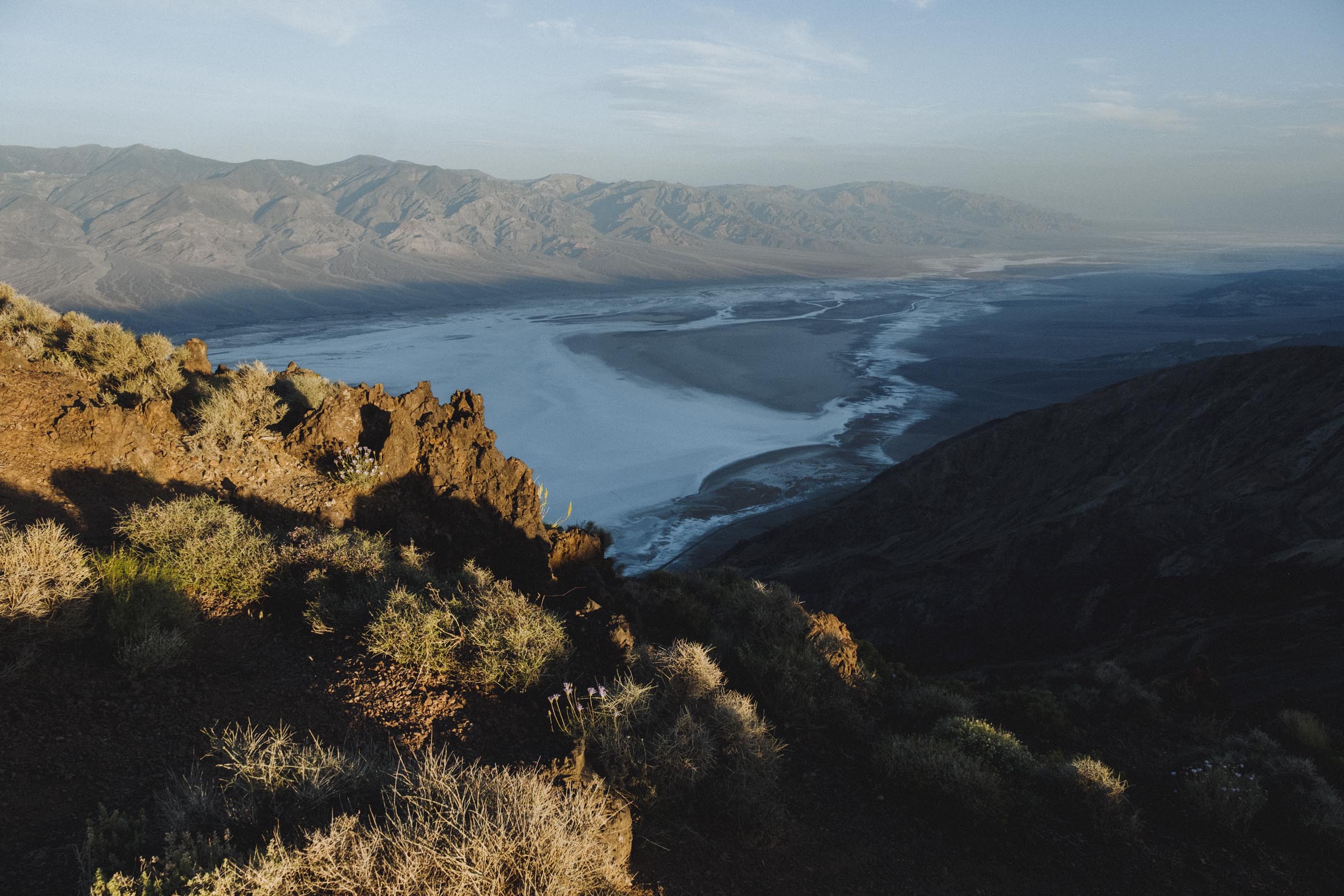

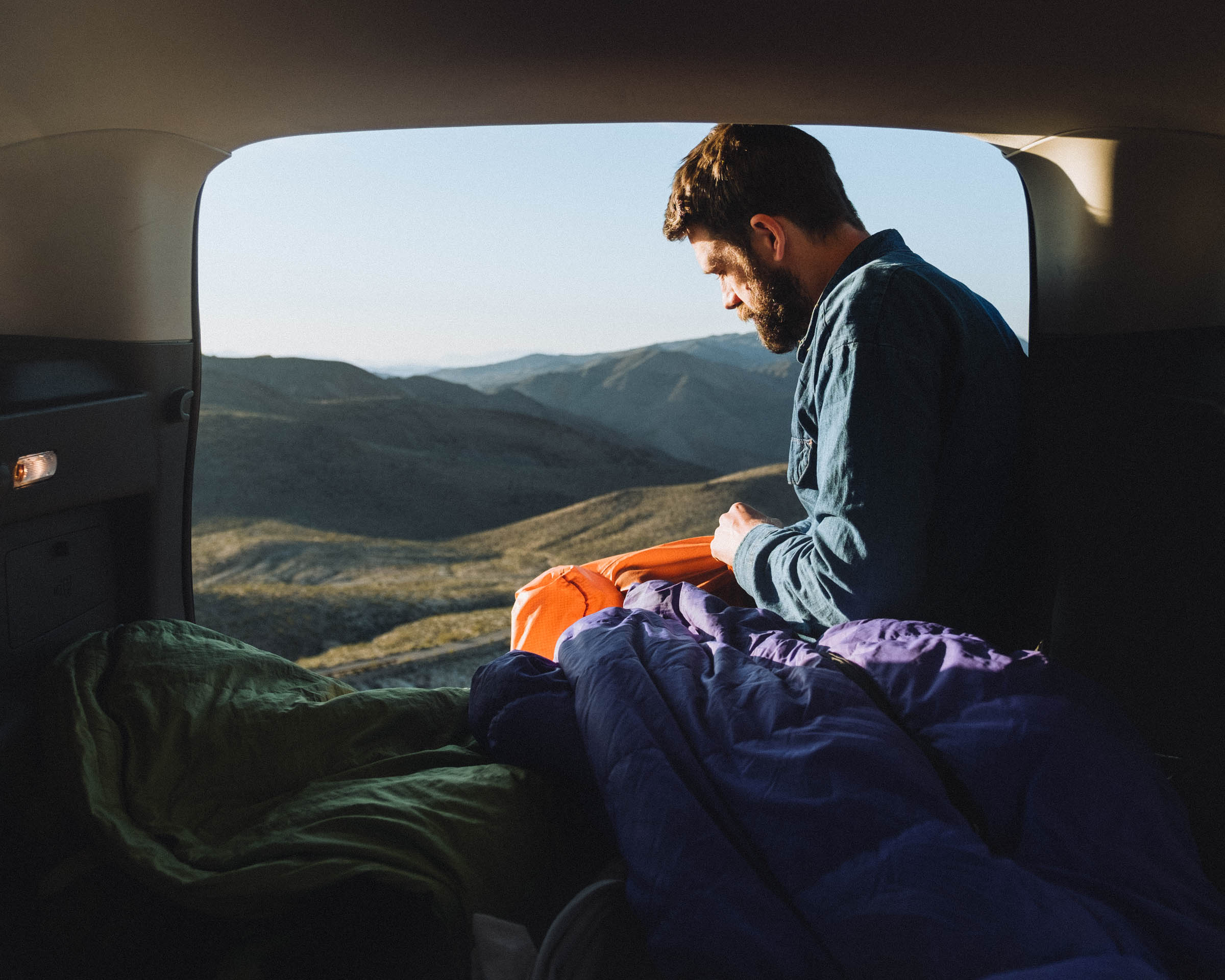

It was with some relief when it came time to leave Death Valley. Weather reports back home called for a week of cold and wet, and honestly, we couldn't have been more excited.
But images of the desert have a way of staying with you. The burning heat fades to a warm memory of pleasant languor, and the vast empty desolation, at once both crushing and comforting, speaks to something deep inside of us. It pulls at the imagination, beckoning, begging you to don some sunscreen and an adventure hat and get back out there to explore every gulch and gulley.
We pulled back on the road towards Furnace Creek, then up to Hell's Gate, and took one last look back at the blistering basin. The salt pan was shimmering, the mountains a hazy blue wash. The valley spread out before us like a shimmering invitation. There were so many corners left unseen.



